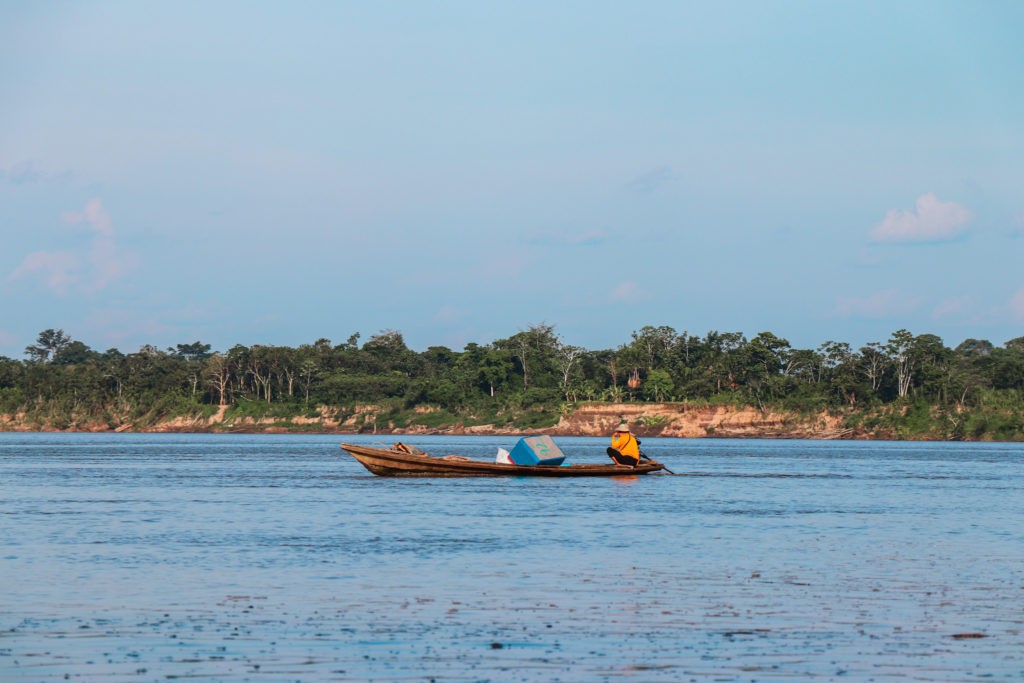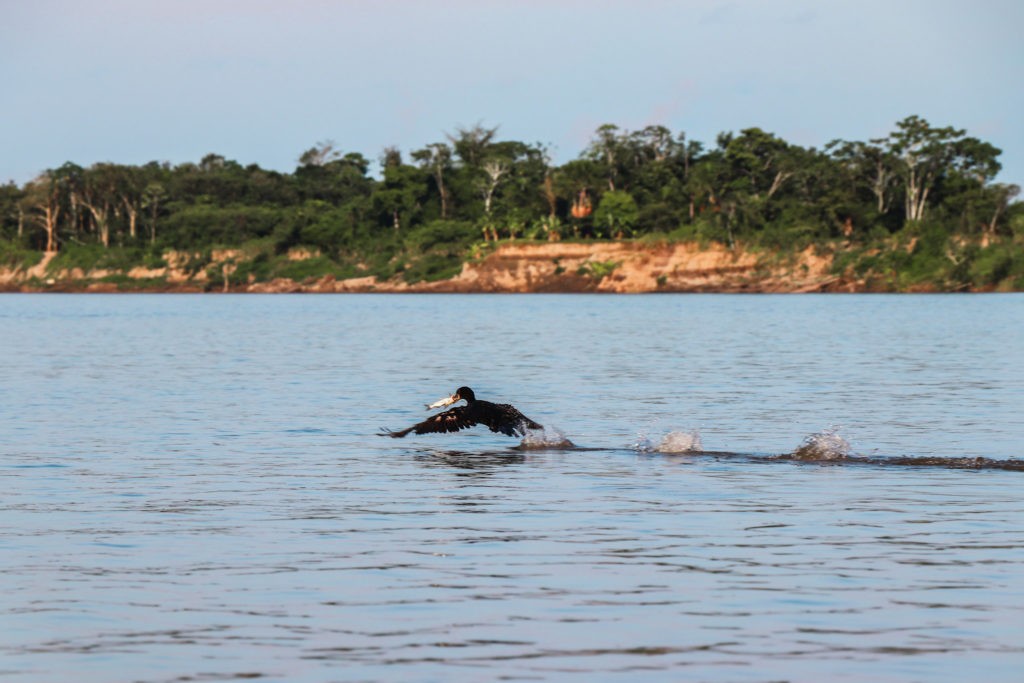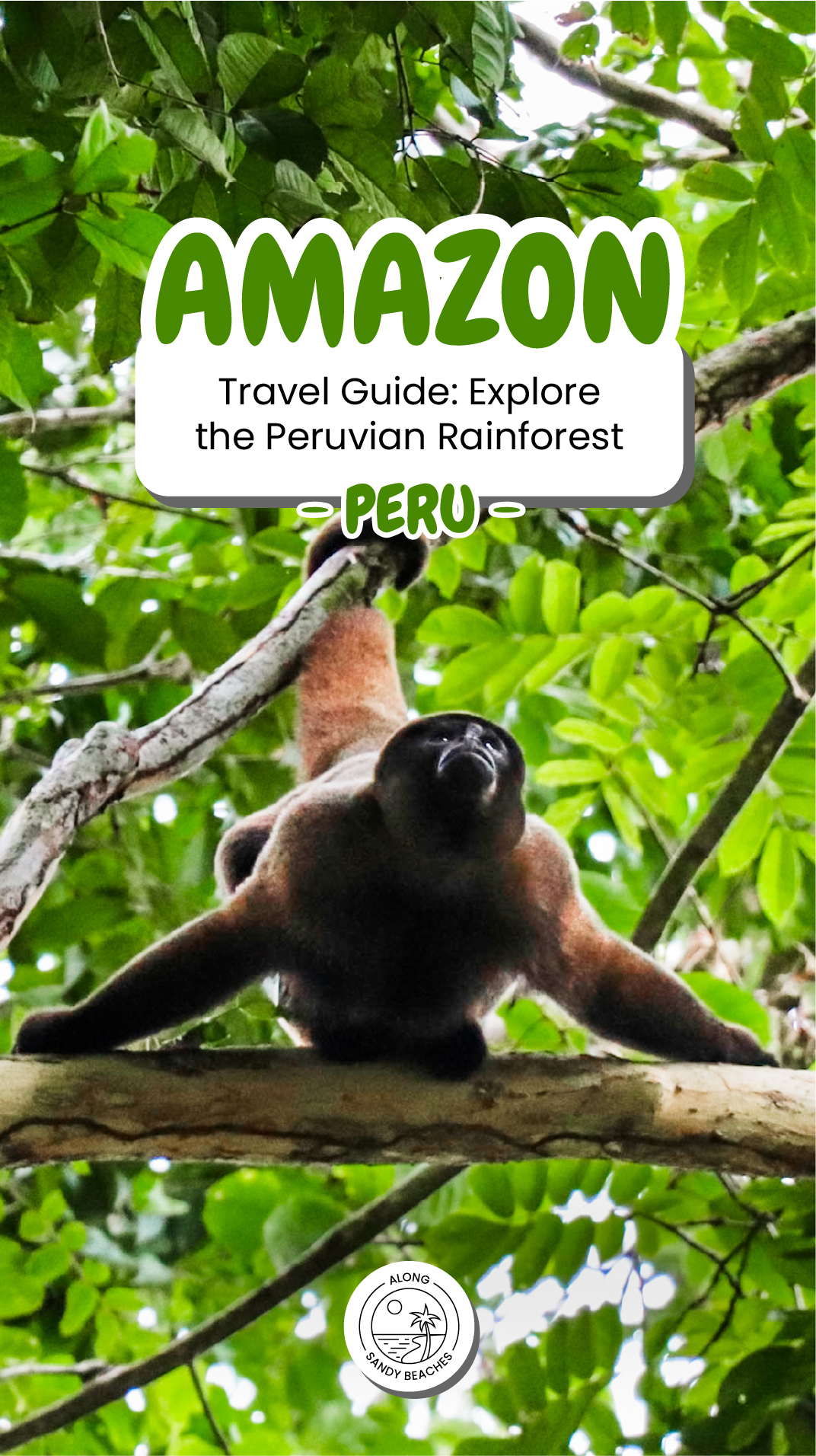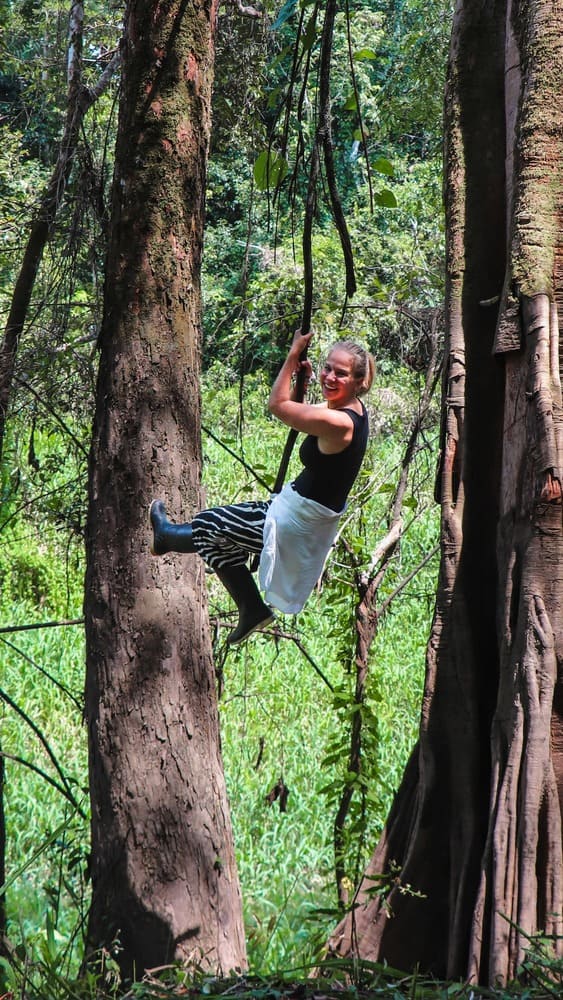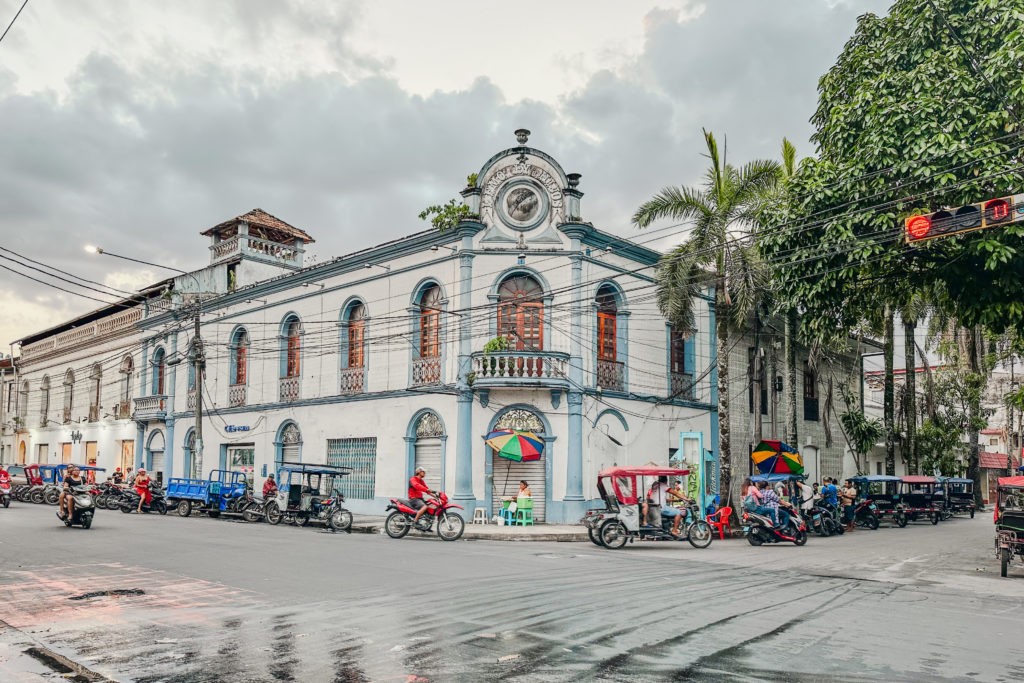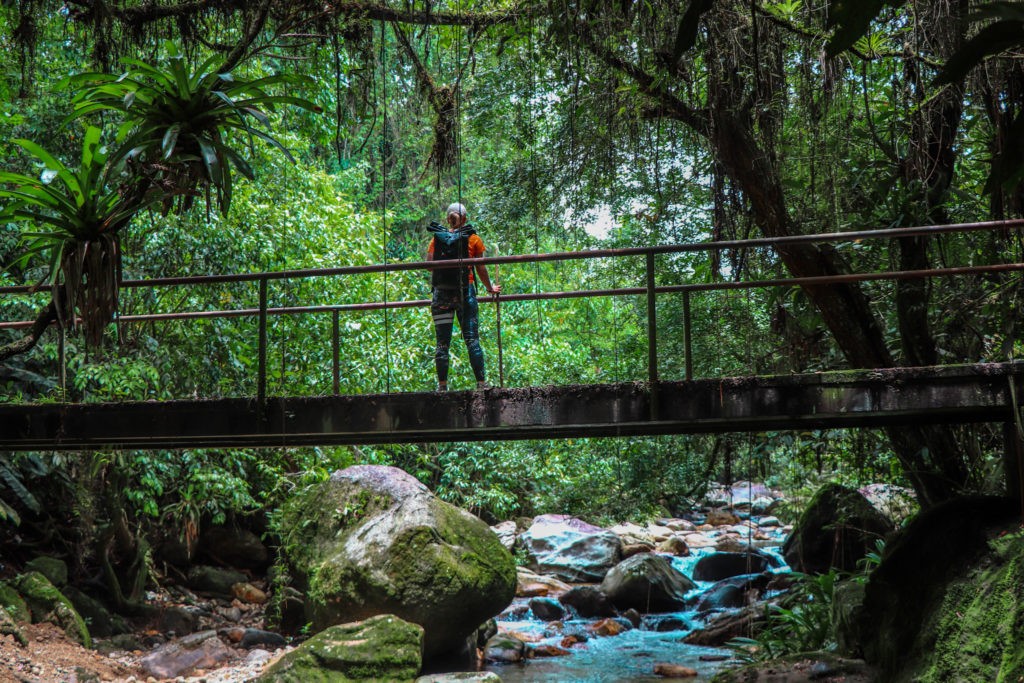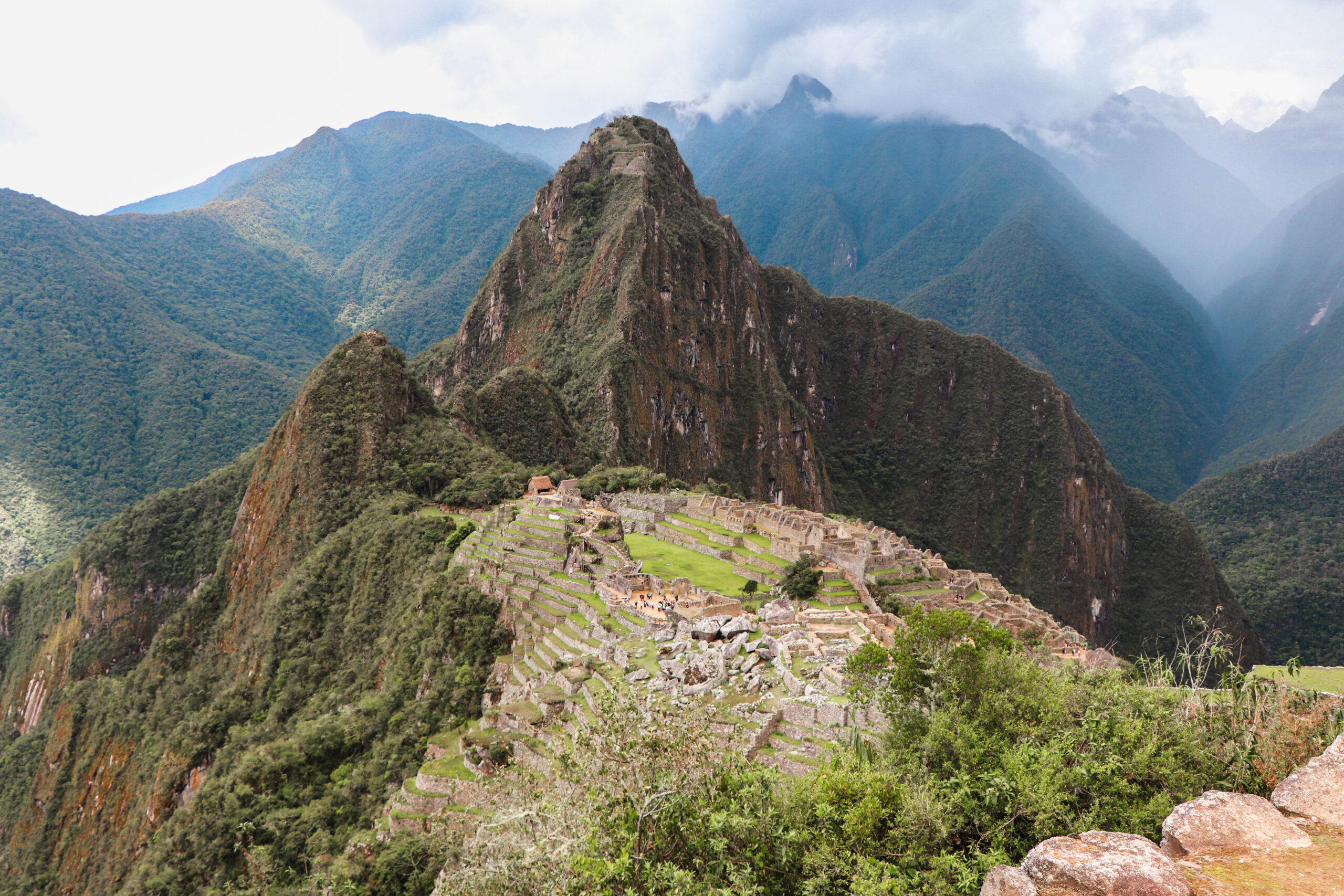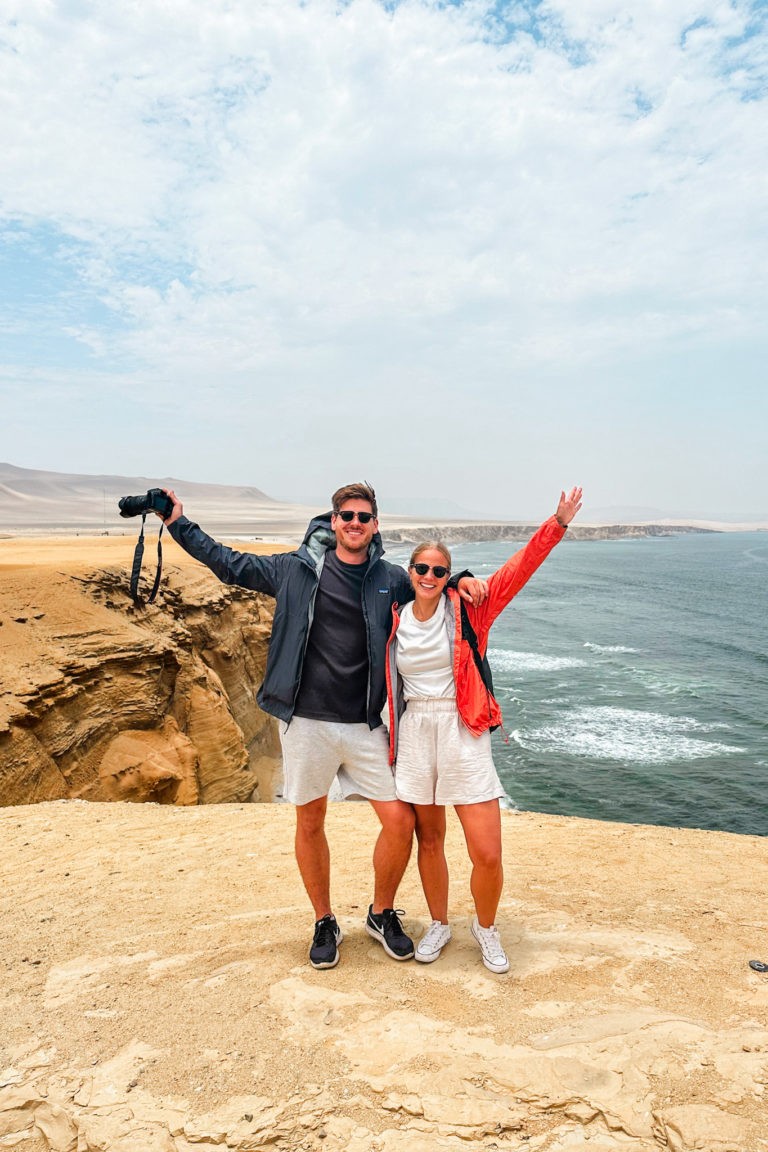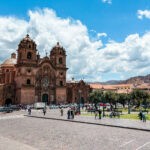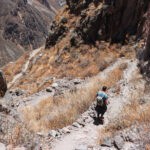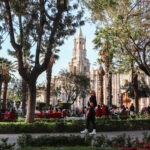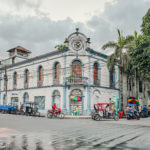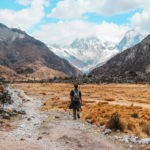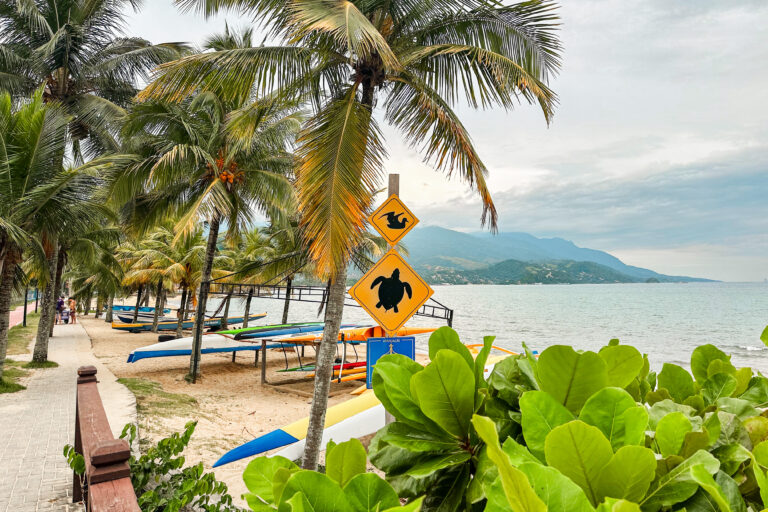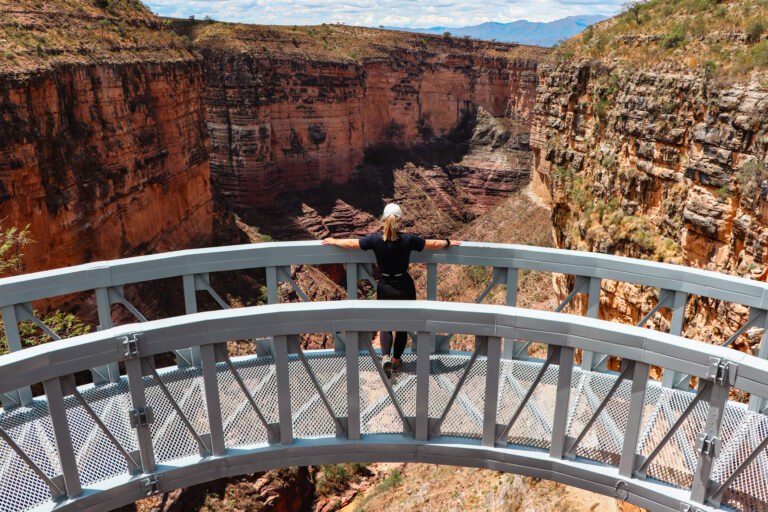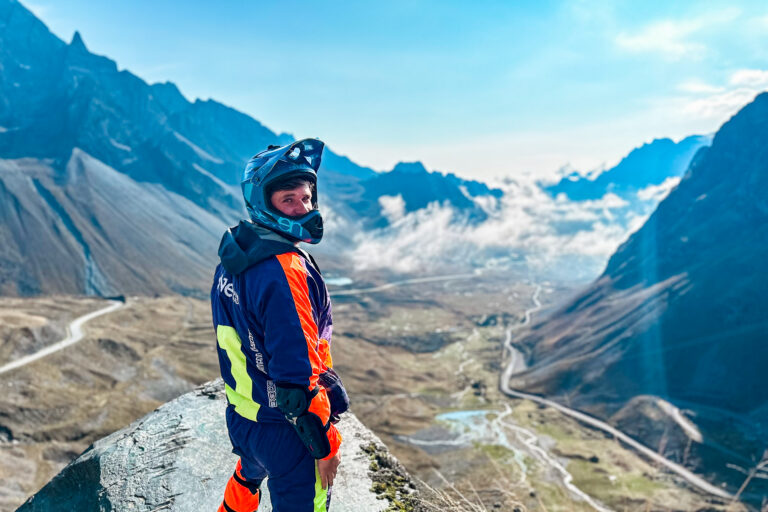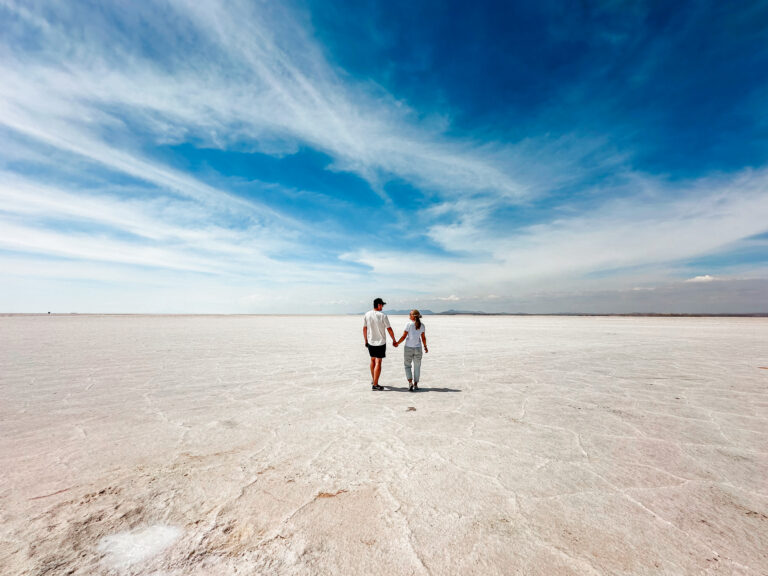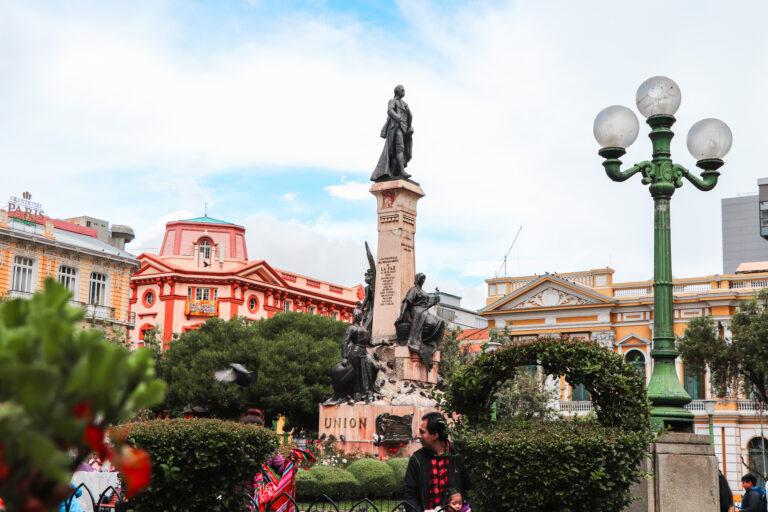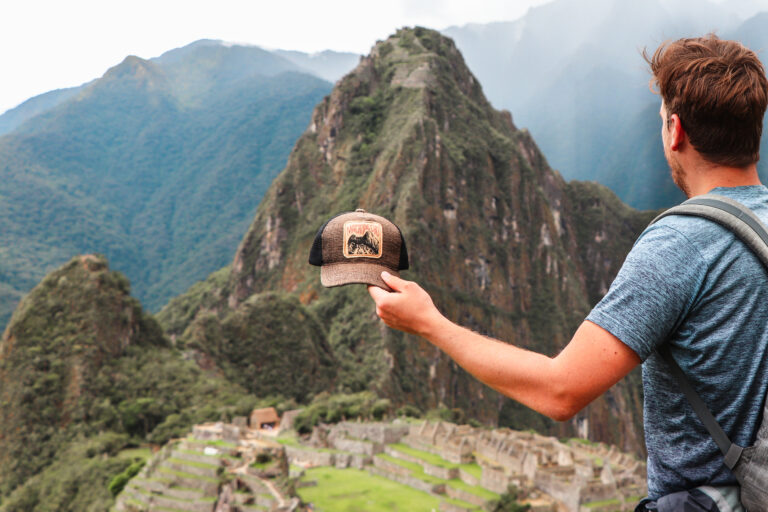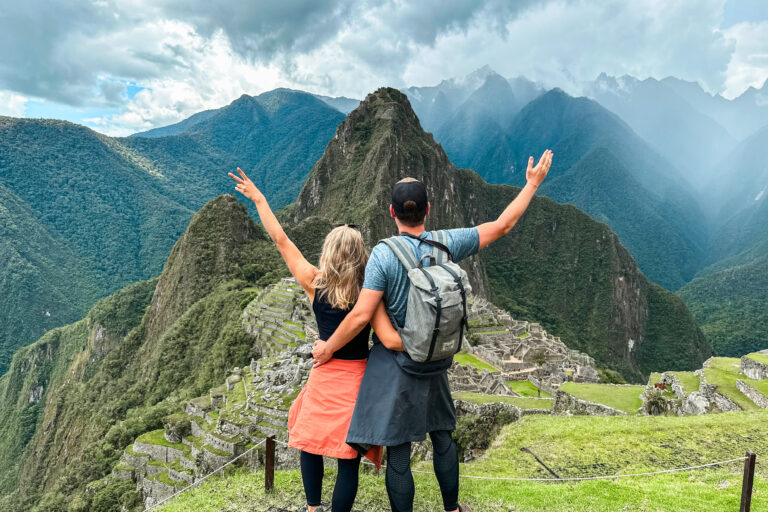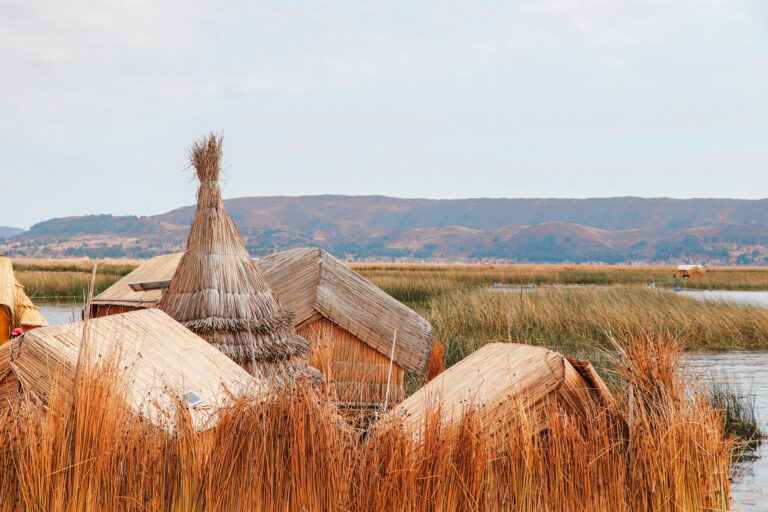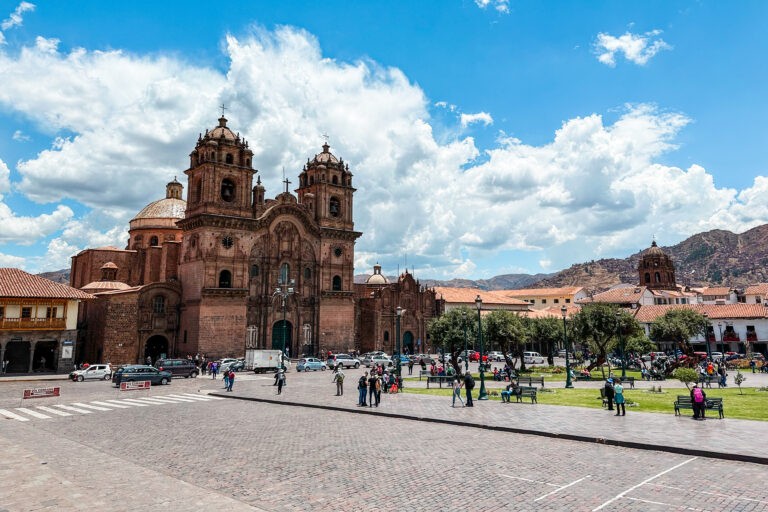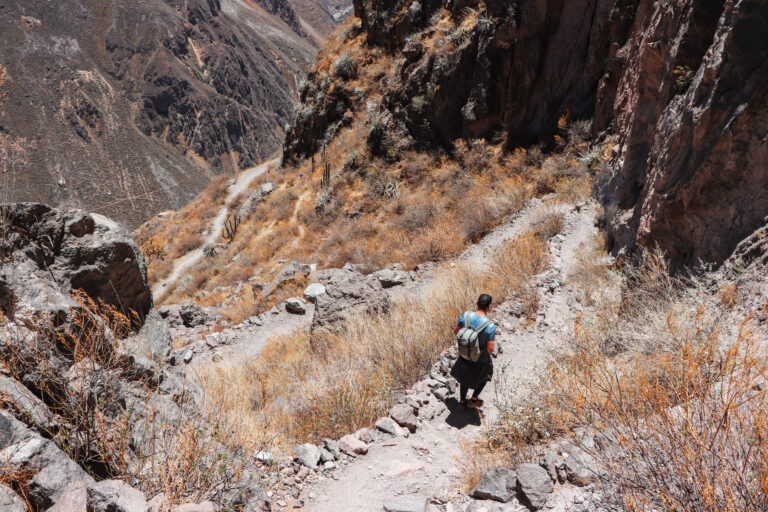The Amazon jungle is the world’s largest tropical rainforest and arguably one of the most amazing places on Earth. Who hasn’t seen it in the documentaries for countless times – the dense jungles, winding rivers, exotic animals like jaguars, sloths, colorful birds, and indigenous tribes living there?
This enormous lush area functions as the Lungs of the Earth, producing around 20% of the world’s oxygen, which is like 1 in every 5 breaths you take!
Right in the heart of the jungle is Iquitos, your gateway to this whole new, wild world. Your trip to the Amazon rainforest will be an adventure you’ll never forget.
Dive into our complete guide and explore the Amazon rainforest in Iquitos. We’ll tell you what to see when to go, what to pack, and more! Your dream is just about to come true.
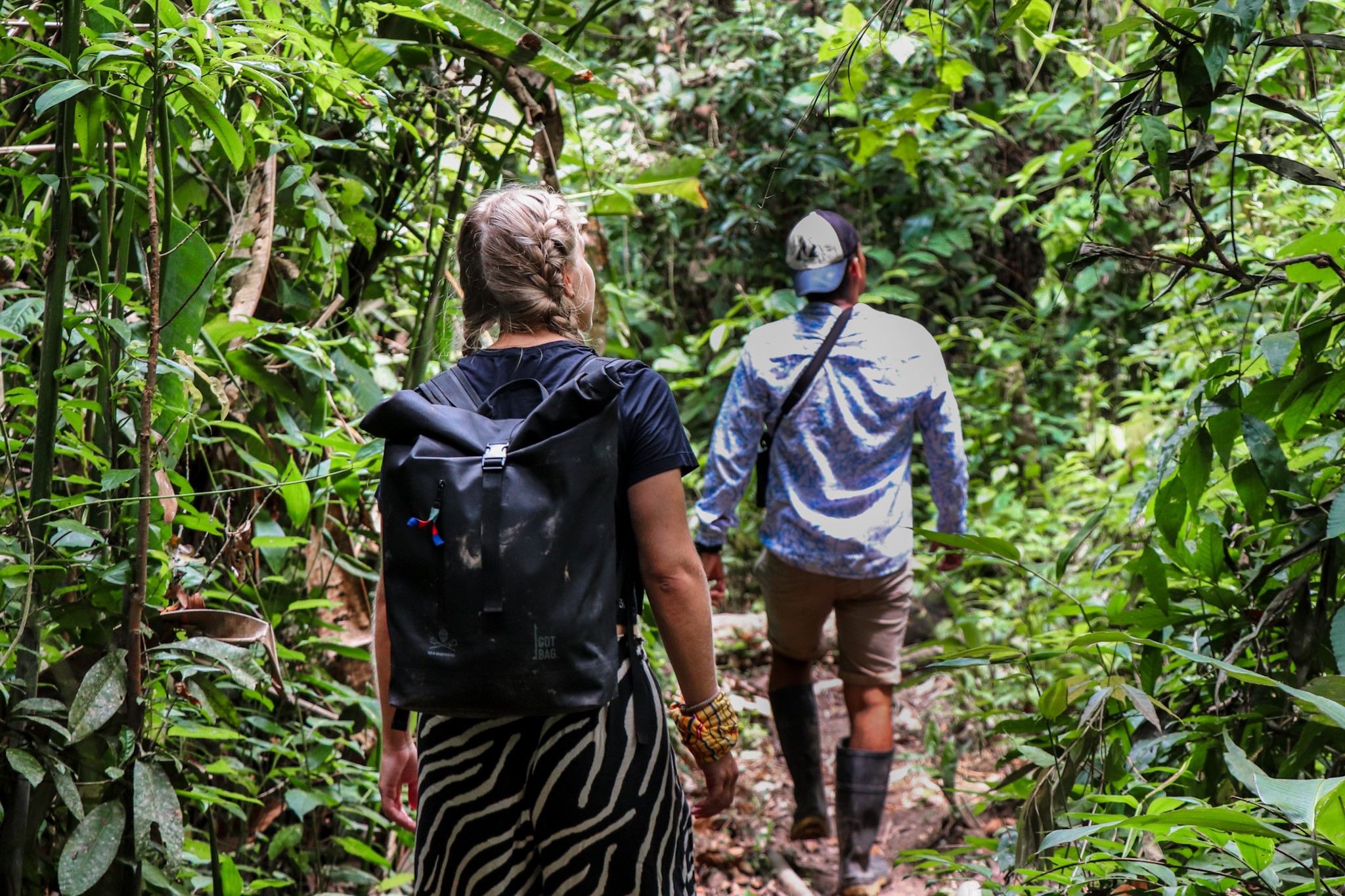
Things to do in the Amazon Rainforest in Peru
There is much more to do in the Amazon rainforest as you would think. From boat rides down the river and jungle walks spotting monkeys to birdwatching, there’s a world of adventure waiting for you. Discover all the things to do in the Peruvian Amazon.
1. Jungle Walk
Walking into the jungle is like stepping into a new world. Upon entering the wilderness, you will be greeted by truly untouched nature. Crickets chirp, frogs croak and it’s rusting in the bushes, as you make your way through the wildly overgrown thicket.
You’ll notice the otherworldly large trees, see butterflies crossing your way, and listen to the songs of hundreds of birds all around. And just as you start thinking about all the potentially dangerous wildlife, you’ll see your guide excitedly pulling out his binoculars to show you something amazing.
Every jungle walk is a thrilling adventure, as you never know what animals will cross your path. Especially in the low-water season, when rivers are dry, most of the exploration in the Amazon is on foot. Animals in the rainforest are often very shy and flee easily, but your guide will make sure that you find them.
We had several hikes through the jungle, spotted different kinds of monkeys, and caught sight of a sloth and even an ant bear. Our guide could imitate 27 different animal and bird sounds and spotted everything with his sharp eyes despite their perfect camouflage.
Tour guides give you rubber boots for hiking in the Amazon. Those keep your feet and legs dry and protect you from spiders, snakes and insects.
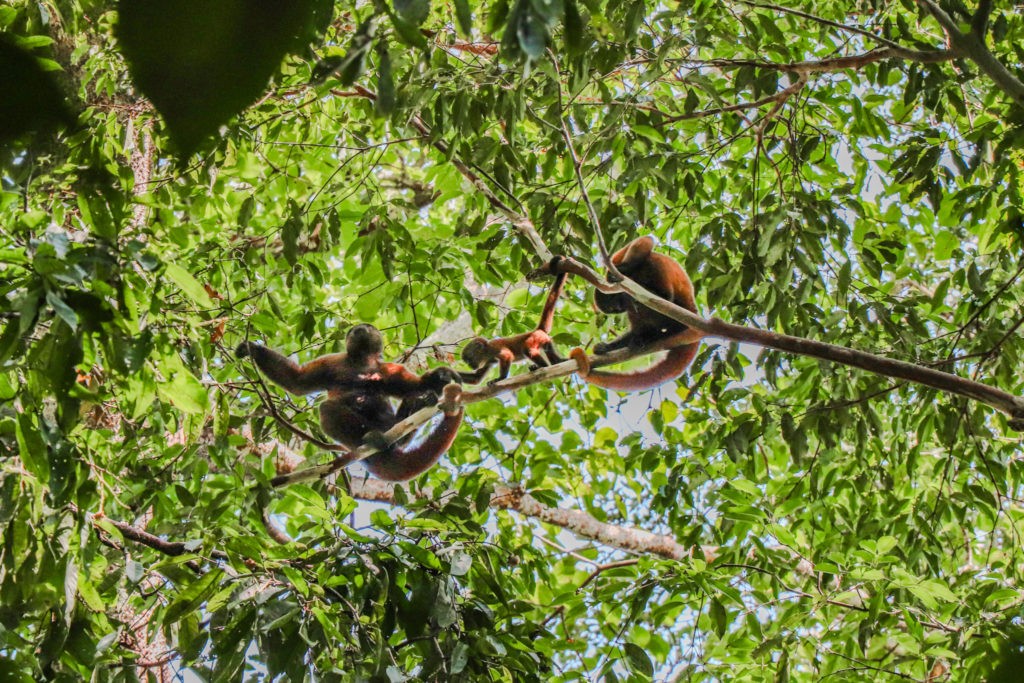
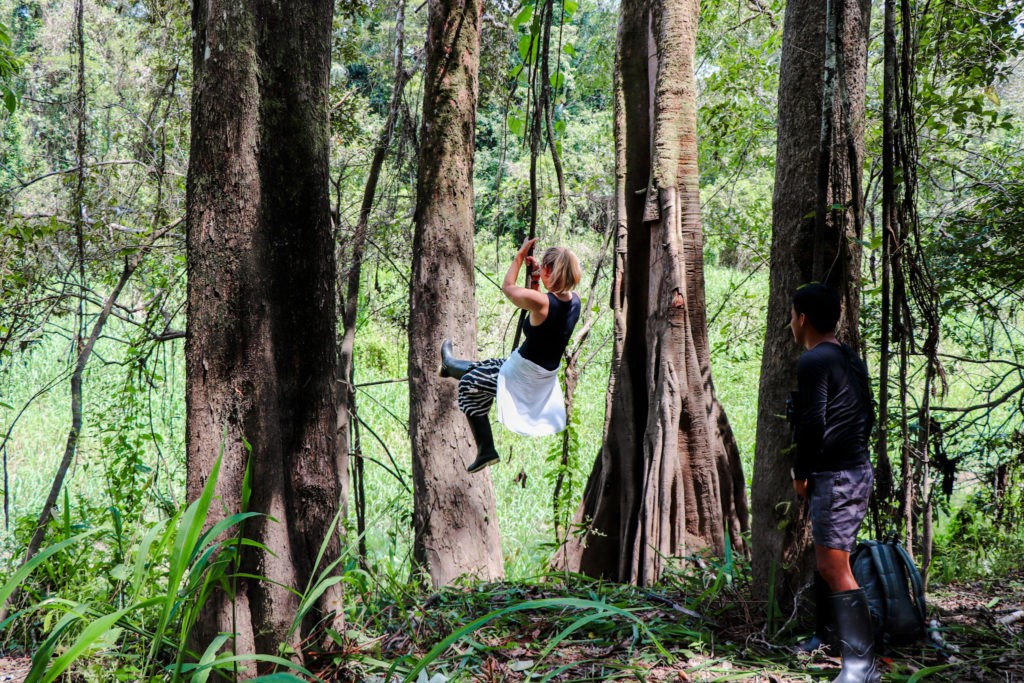
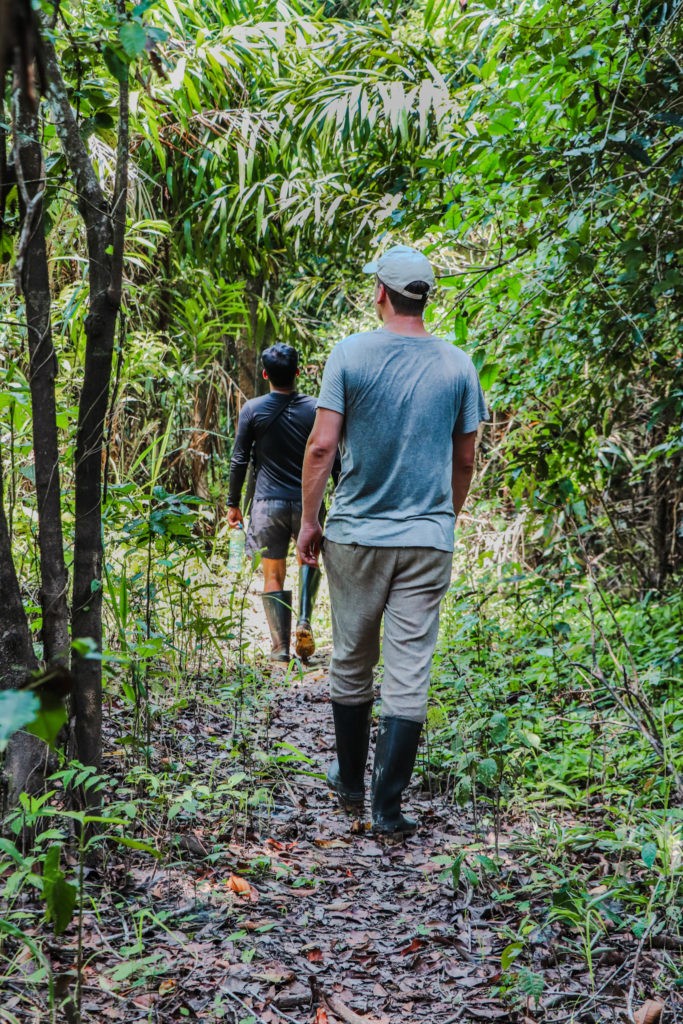
2. Boat Trips
Boat trips in the Amazon are a crucial part of your rainforest adventure. Naturally, it’s a very convenient way to get around in this massive jungle. Plus, you won’t believe what you can spot along the riverbanks and in the water itself.
Meet the famous pink dolphins, catch a glimpse of tiny caiman babies, and with a bit of luck you might even spot some turtles. Also, keep an eye out for birds, such as Kingfishers and Hawks as they’re on the hunt for fish.
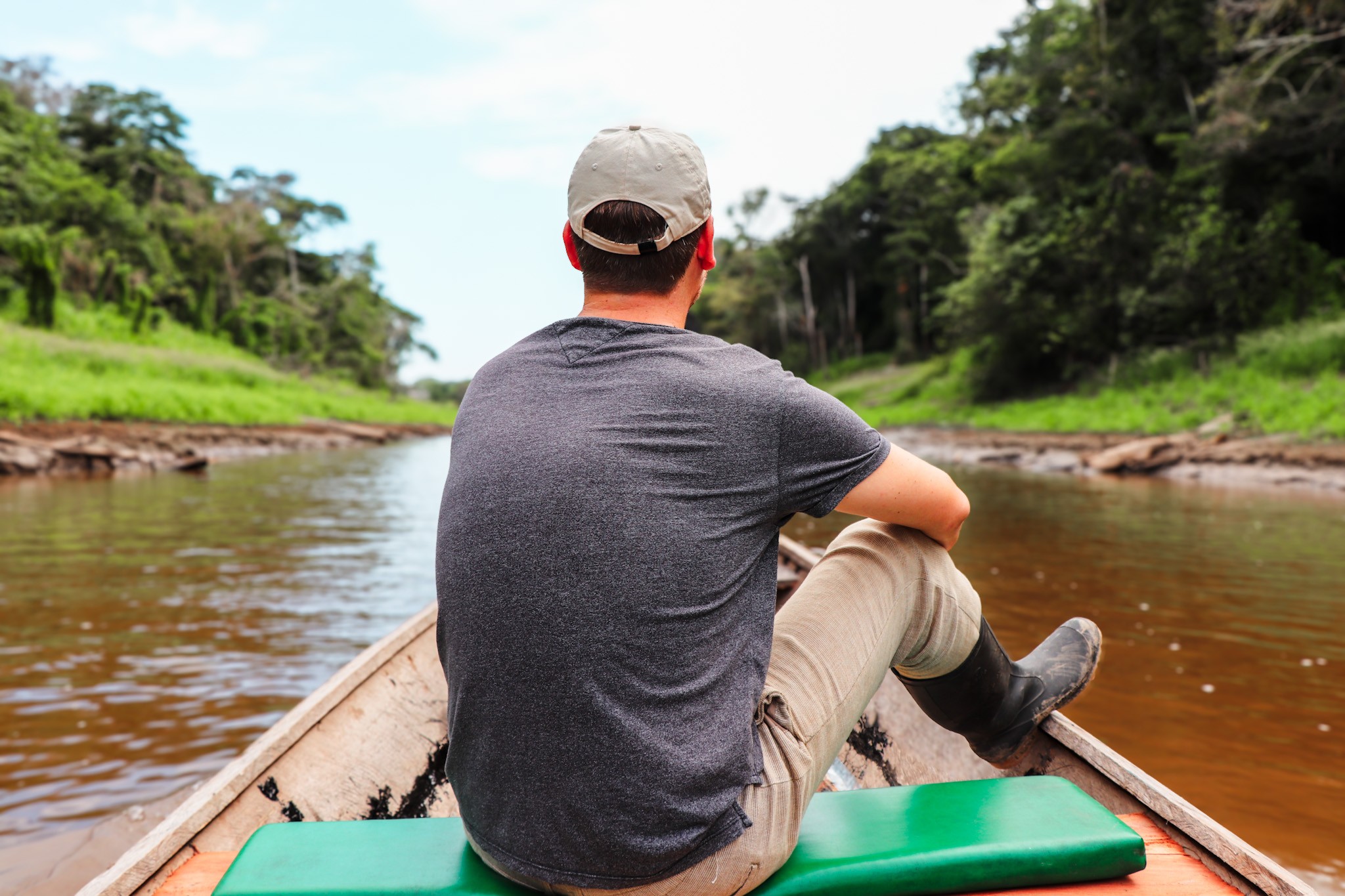
3. Birdwatching
It’s magical to wake up every morning to a symphony of birds welcoming you to another exciting day in the jungle. Some prefer to live deep within the jungle, while others can be easily spotted from the boat. The most sought-after bird sighting is probably the toucan, which you might know from the Haribo gummy bear package. It is famous for its large and brightly colored bill.
Even if you are not a bird enthusiast, like us, it is still easy to get amazed by the birds in the Amazon. The Reserva Nacional Pacaya Samiria of Peru is home to over 450 bird species, each of them more colorful and melodious than the last.
Did you know that in the Amazon there are a lot of birds that imitate the sound of other birds? They are doing this to protect their territories, communicate with their chicks, or sound more attractive to mates.
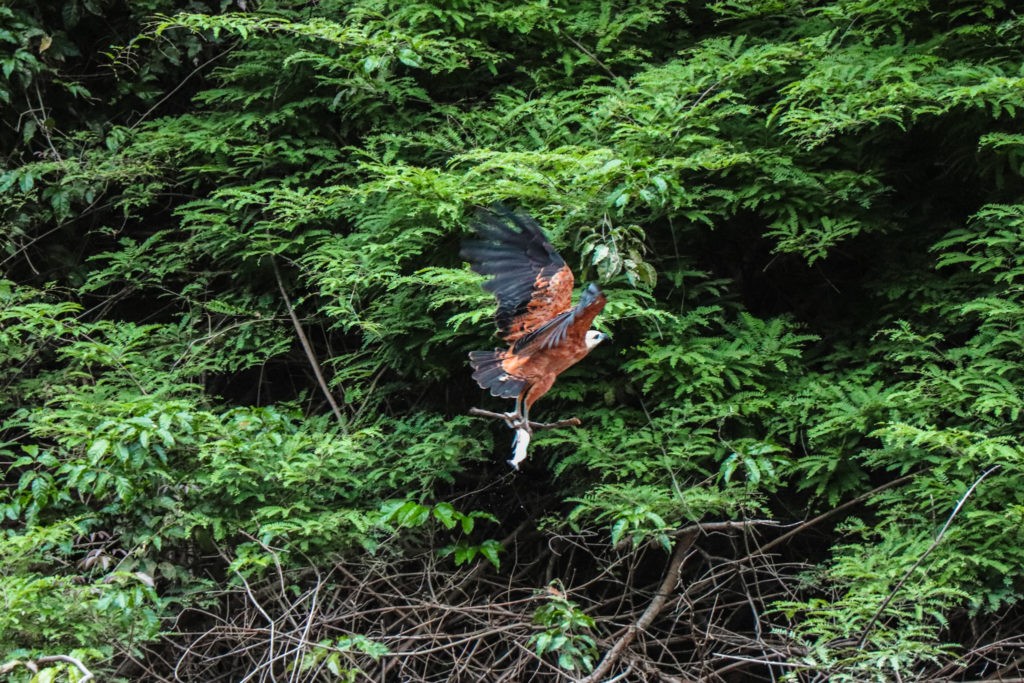
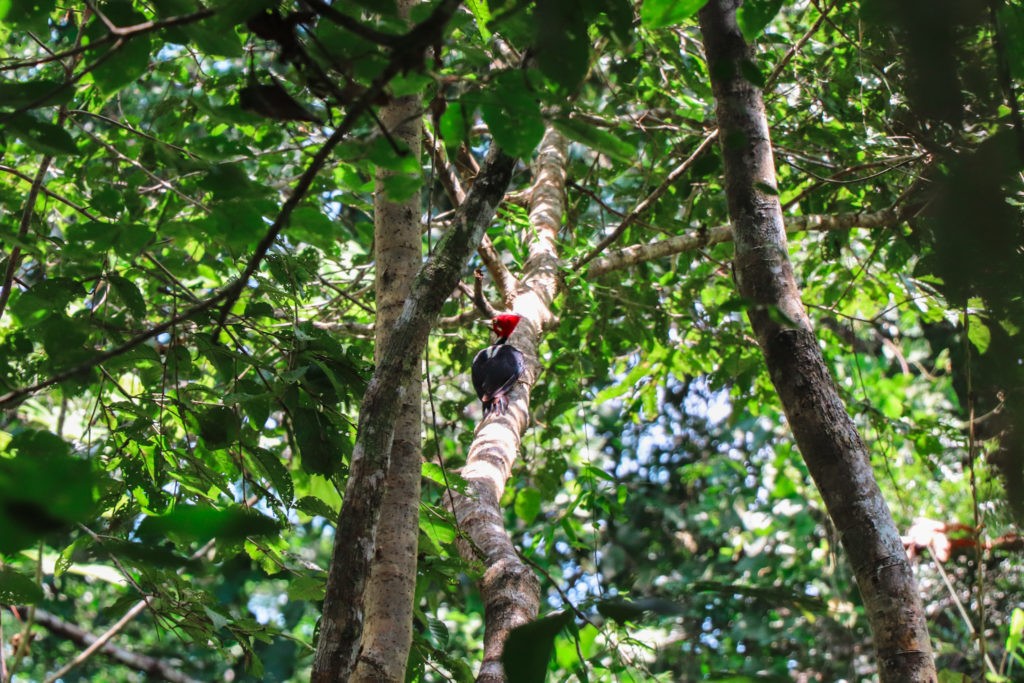
4. Night Walk
Many animals in the Amazon rainforest are active at night and you won’t usually see them throughout the day. Therefore, going on a night walk is one of the most adventurous things to do in the Amazon. It takes some level of courage and braveness though to step into the wild darkness.
While in the thicket at night, you can spot tarantulas, spiders, snakes, scorpions, and frogs. Some are experts in camouflaging and calmly waiting for their prey, while others are on the hunt.
Equipped with our headlamps, we felt excited and fearful at the same time. We asked ourselves how crazy one can be to vanish into the dark, but could barely hold our breaths when we spotted a fox watching us from the bushes.
A night walk in the Amazon is an unforgettable adventure. Make sure to closely follow the footsteps of your guide and avoid touching anything. Take your headlamps or flashlights with you and wear long-sleeved clothes to avoid getting bitten by mosquitoes. And don’t forget to enjoy the show!
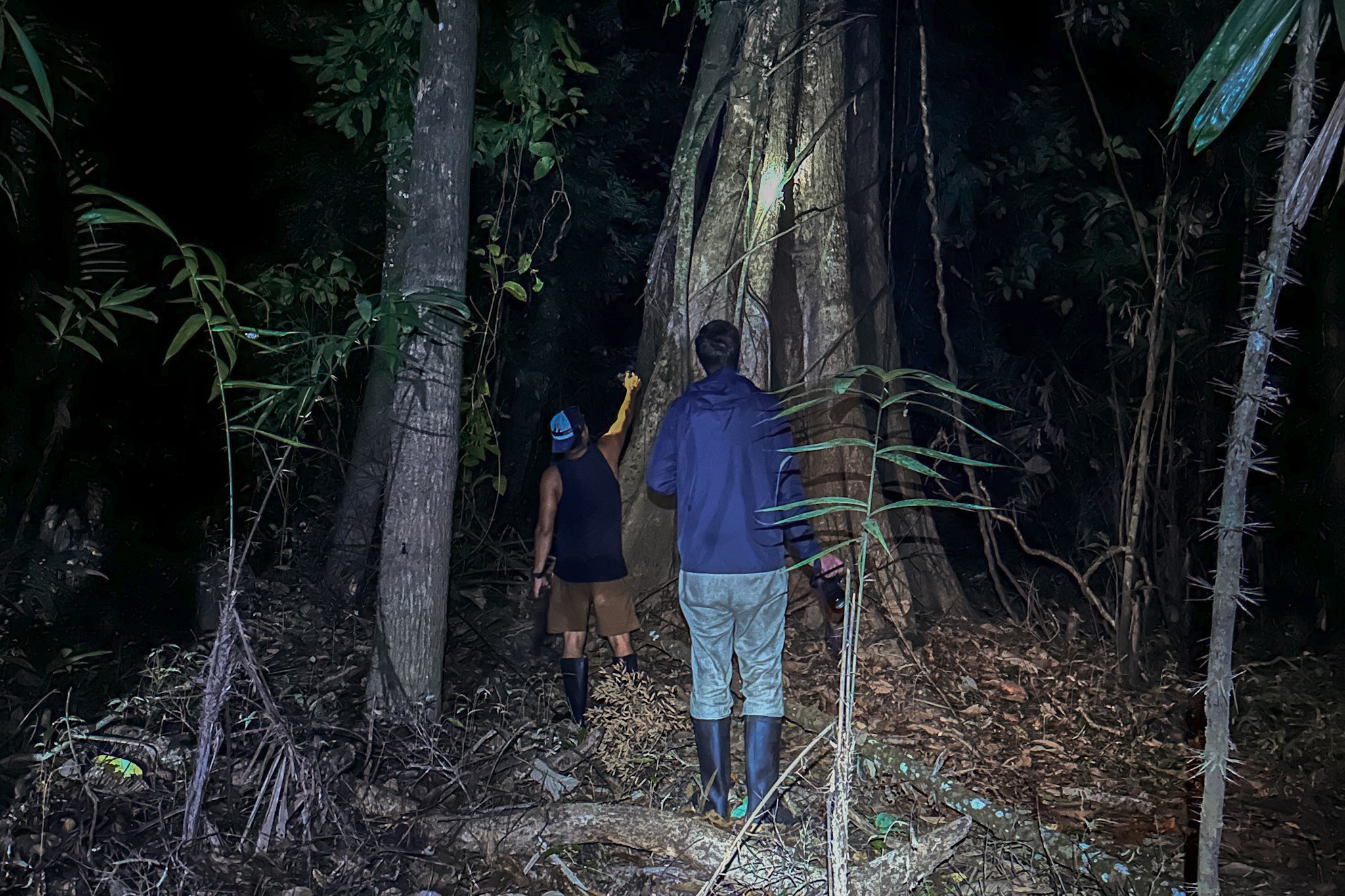
5. Piranha Fishing
Going out for Piranha fishing is another cool activity to do in the Amazon. You’ll be equipped with a basic fishing rod and some chicken skin bait to try your luck catching piranhas. But believe us, this is harder than you may think. They are unbelievable fast in eating your bait, so that you will need lightning fast reactions to catch them.
Did you know that piranhas actually aren’t as cruel as you may have seen from movies? They don’t like to bite big things. But better not stick your finger or toes in the water for too long.
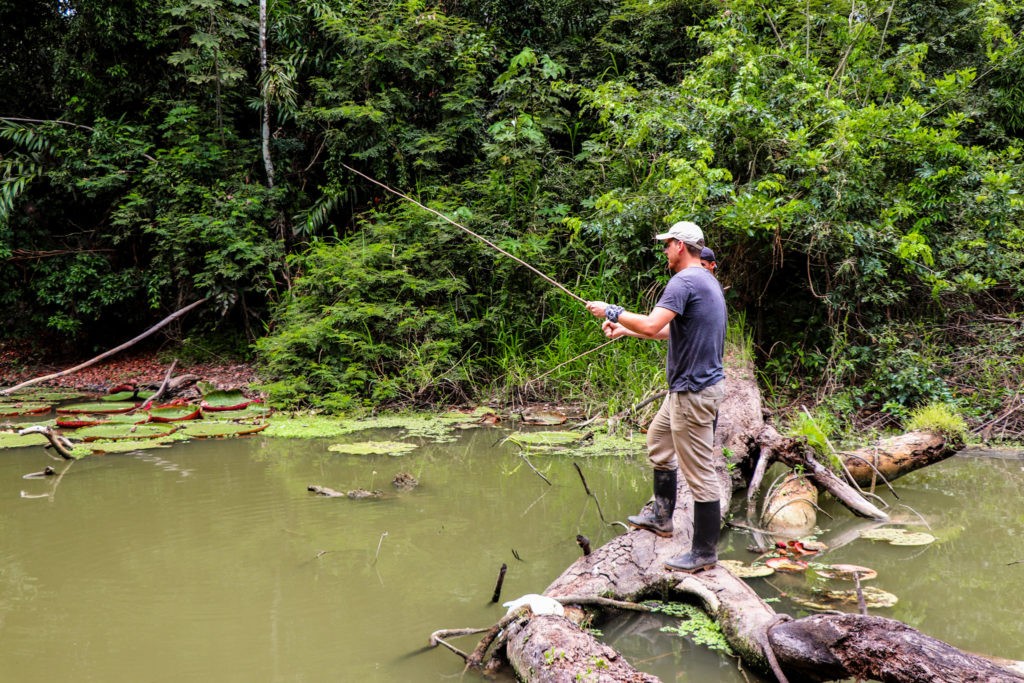
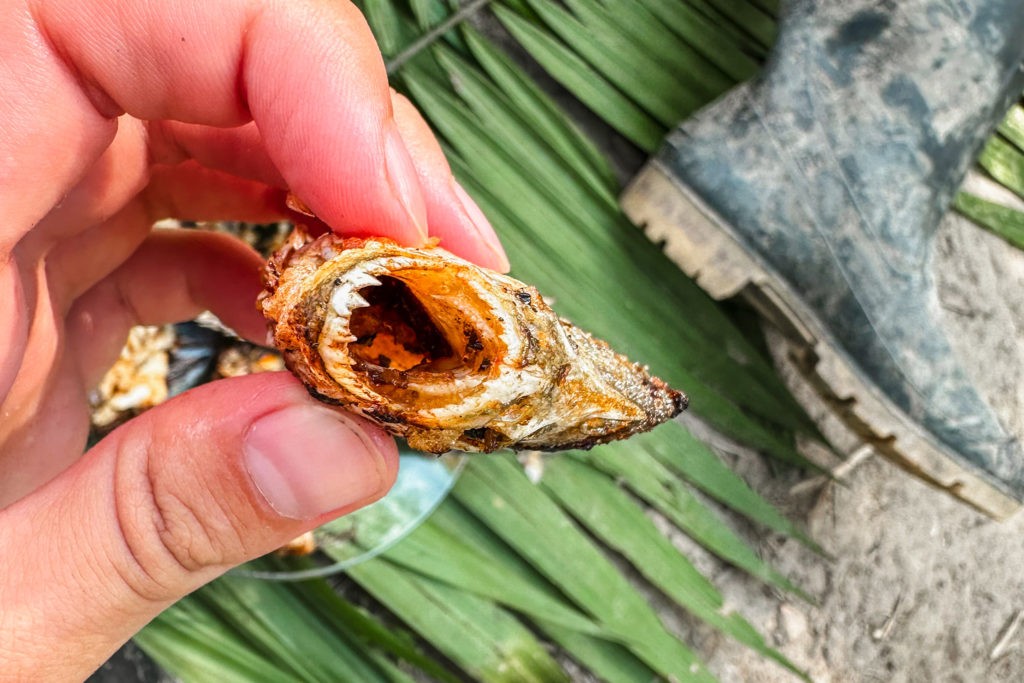
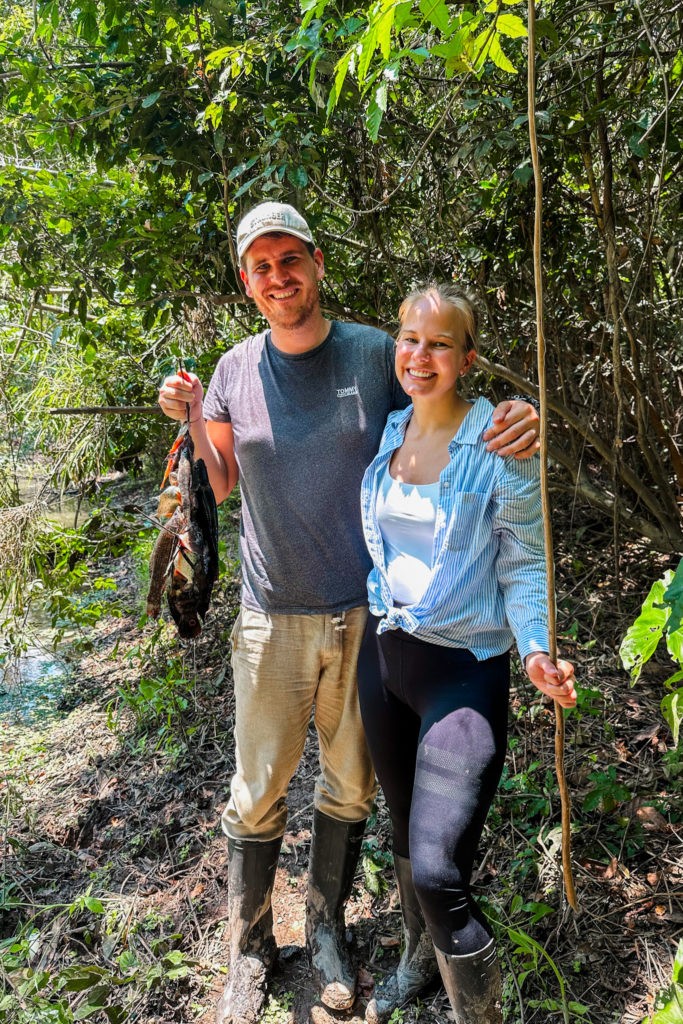
6. Swim in the Amazon river
After your exhausting hikes into the Amazon rainforest, have a swim in the world’s second largest river to cool off. And while it is not necessarily a must-do for everybody, having a little swim in the murky waters of the Amazon was a welcomed thing to do for us to cool off from the tropical temperatures and enjoy the sun setting on the horizon.
Make sure that your guide chooses a proper place to swim. For us, it was near a sandy beach, where currents were weak and the entrance was easy. The water of the Amazon river is refreshing, but fairly warm. And don’t worry about being bitten 0r something in the art. We were skeptical too, until our guide assured us that it is safe to swim.
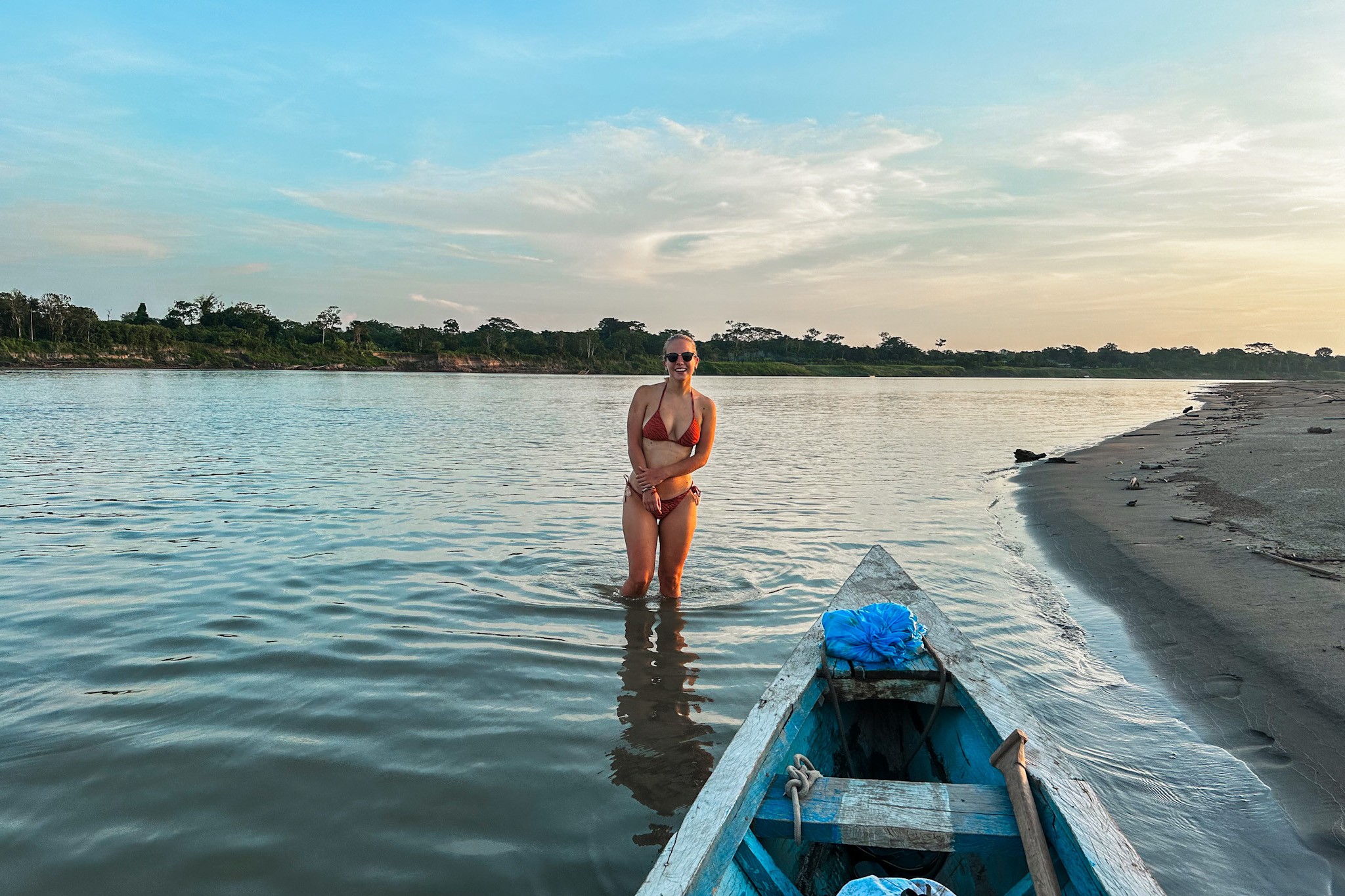
7. Survival Training
Over thousands of years, locals have learned how the flora and fauna can help them to survive in this usually inhabitable environment.
When in the Amazon, you’ll have the chance to learn about the art of survival, as your guide teaches you some handy tips. You’ll understand which plants to use for medicine, what trees can make a great shelter, how the sun helps you navigate through the jungle, and which fruits help you overcome hunger and thirst.
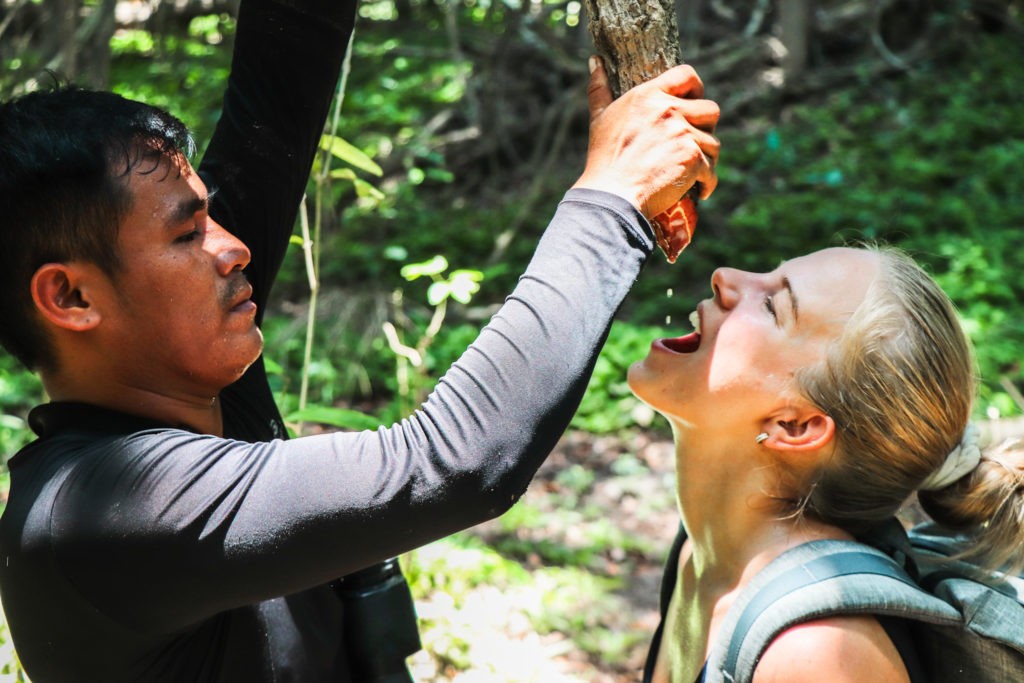
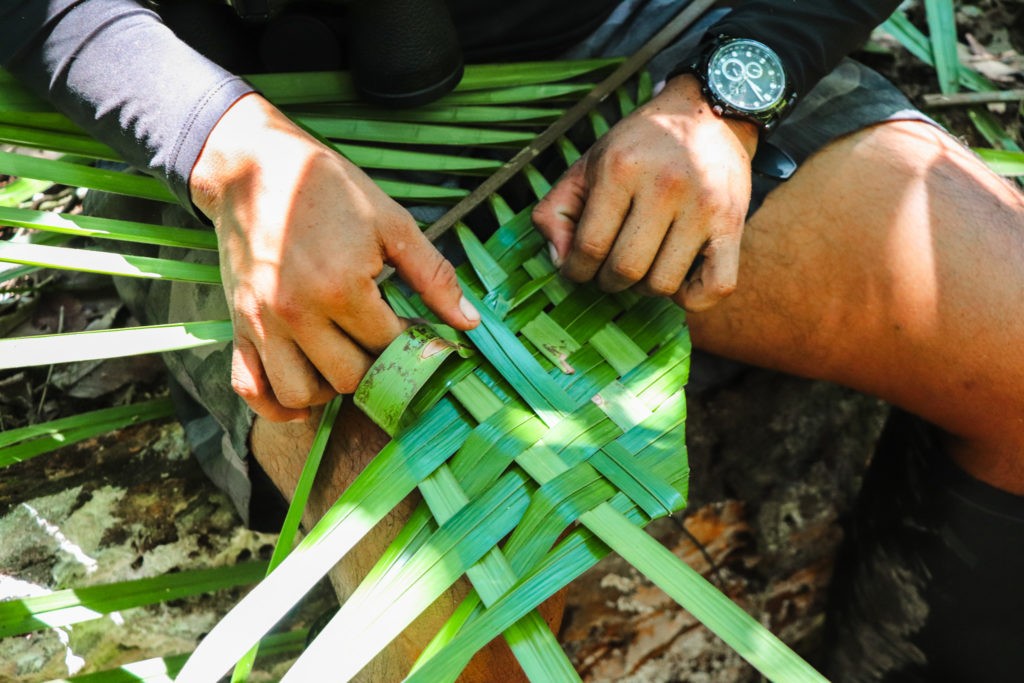
8. Sunrise and sunset
Watching the sunrise and sunset midst of the Amazon is a magical thing to do. In the early morning, you can hear the sound of the rainforest becoming alive, as you watch at an ablaze sky.
The sky’s colors during the sunset are breathtaking, ranging from fiery reds and oranges to deep purples and blues, caused by water vapors and dust particles in the air. There is something special about seeing the sun rise and set over the trees in the Amazon.
It’s a perfect time to reflect on the beauty of nature and the fragility of our planet.
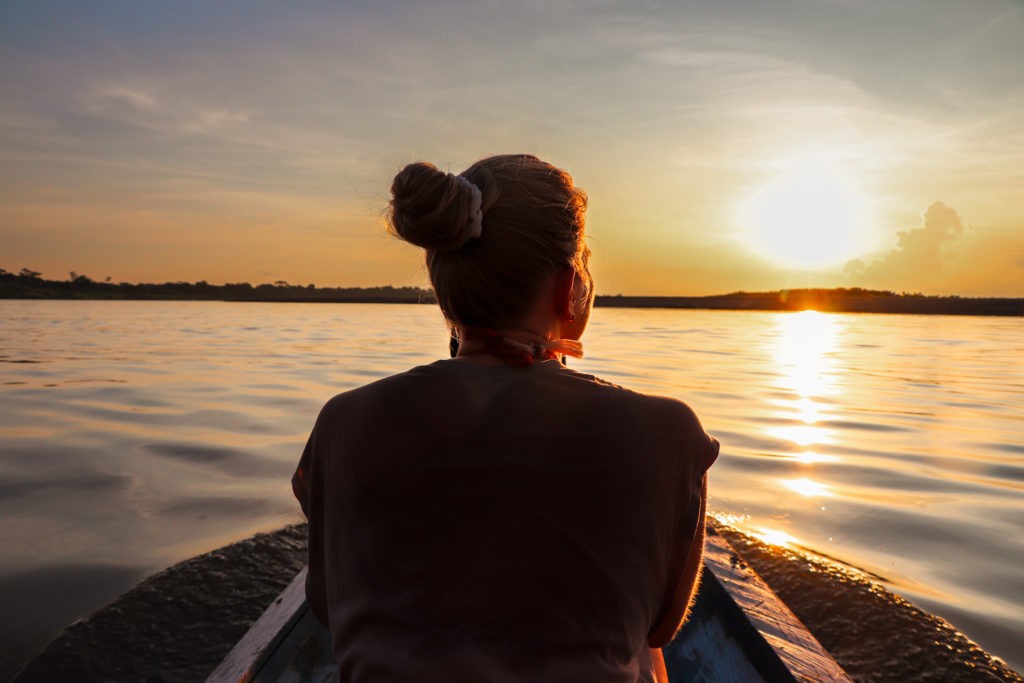
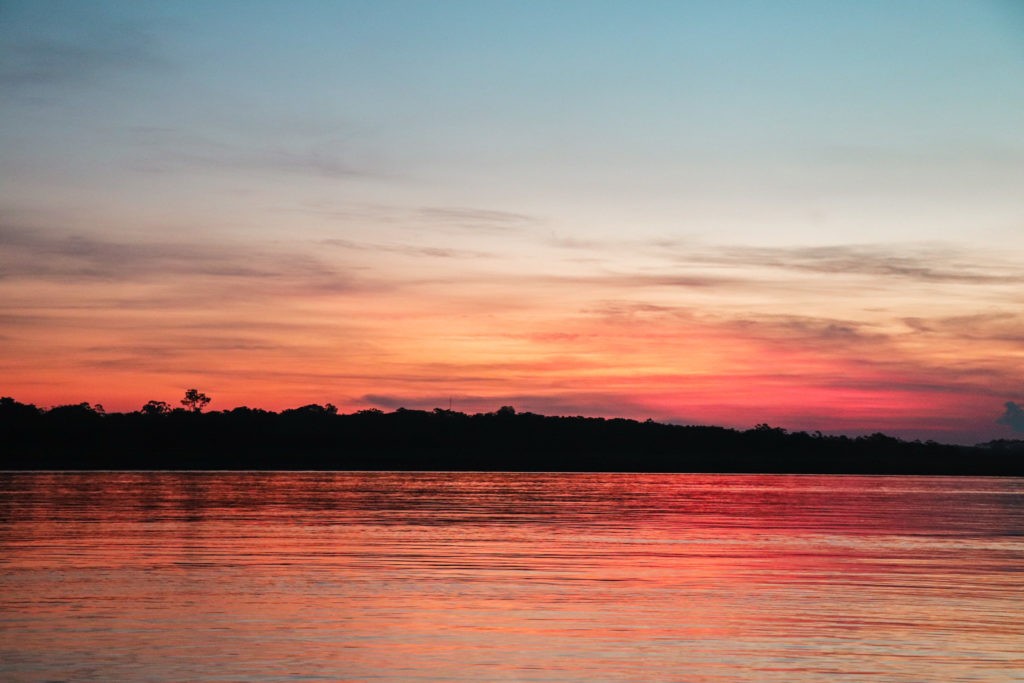
9. Visit a local village
Visiting a local village is a perfect opportunity to witness how locals live in the jungle today. Most people still think that locals live the traditional way, in small huts and completely isolated from the outside world. And while this is only true for a few, shy indigenous tribes in the very center of the Amazon, most of the people today live a pretty civilized life.
We had the chance to visit the local village Libertad. The one in which our guide grew up. When we were walking through the village, he told us a lot about its development and about how government and sustainable tourism have contributed to the villagers’ well-being.
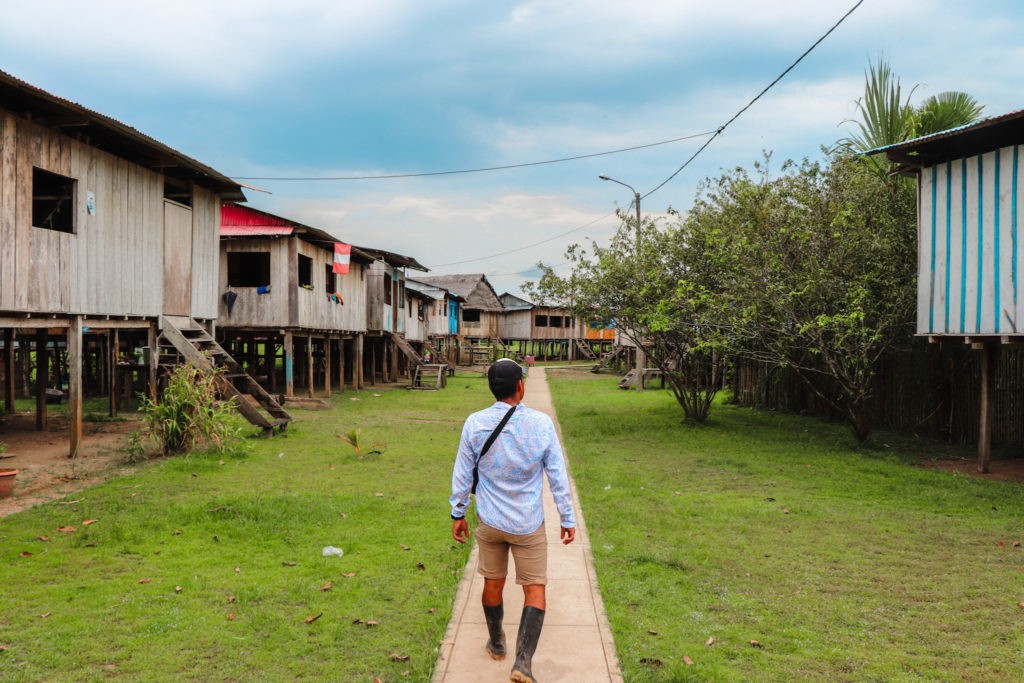
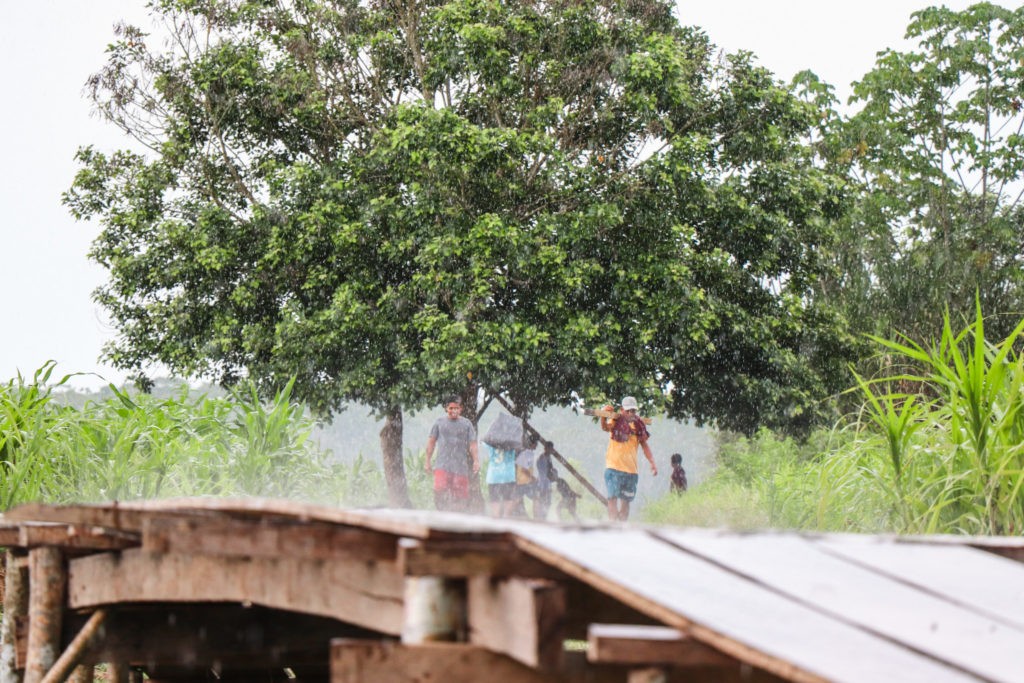
Things to see in the Amazon Rainforest in Peru
The Amazon rainforest is full of amazing wildlife. Monkeys are swinging in the trees, colorful birds flying around, and fascinating creatures living in the rivers. If you visit the northern Amazon near Iquitos, you might even see the special pink river dolphins.
Make sure to keep your eyes open and your camera ready because meeting these rainforest animals will be the most exciting part of your jungle trip. We show you the most popular animals to spot in the jungle.
1. Pink Dolphins
Pink dolphins are one of the coolest animals in the Amazon rainforest! You’ve guessed it – they’re known for their distinctive pink coloration. Their pink coloration is caused by blood vessels that are close to the surface of their skin. Also, did you know that the older pink dolphins tend to become pinker?
Pink dolphins can only be found in the Amazon and Orinoco river basins in South America. They prefer slow-moving waters with plenty of vegetation. It’s an unforgettable experience to see these amazing creatures up close.
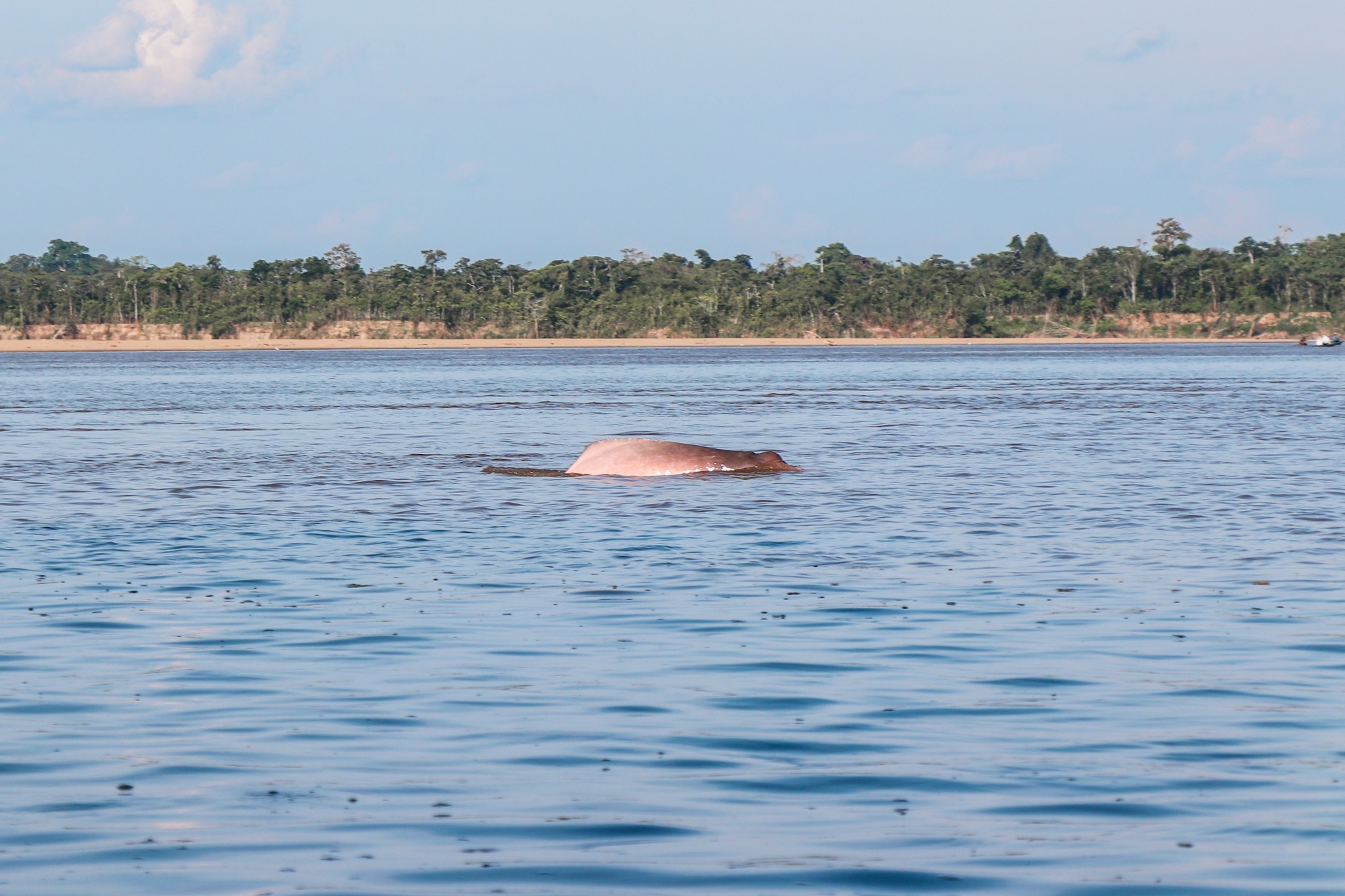
2. Black Caimans
The black caiman is another incredible resident of the waters around Iquitos.
This remarkable reptile can grow up to a length of 4 meters (13 feet). Typically, adult caimans prefer to hang around the lakes, while the young caimans often hide themselves among the tree trunks and branches in the river.
With a bit of luck, your guide may spot some of these youngsters and might even allow you to hold one, offering a unique ‘hands-on’ experience.
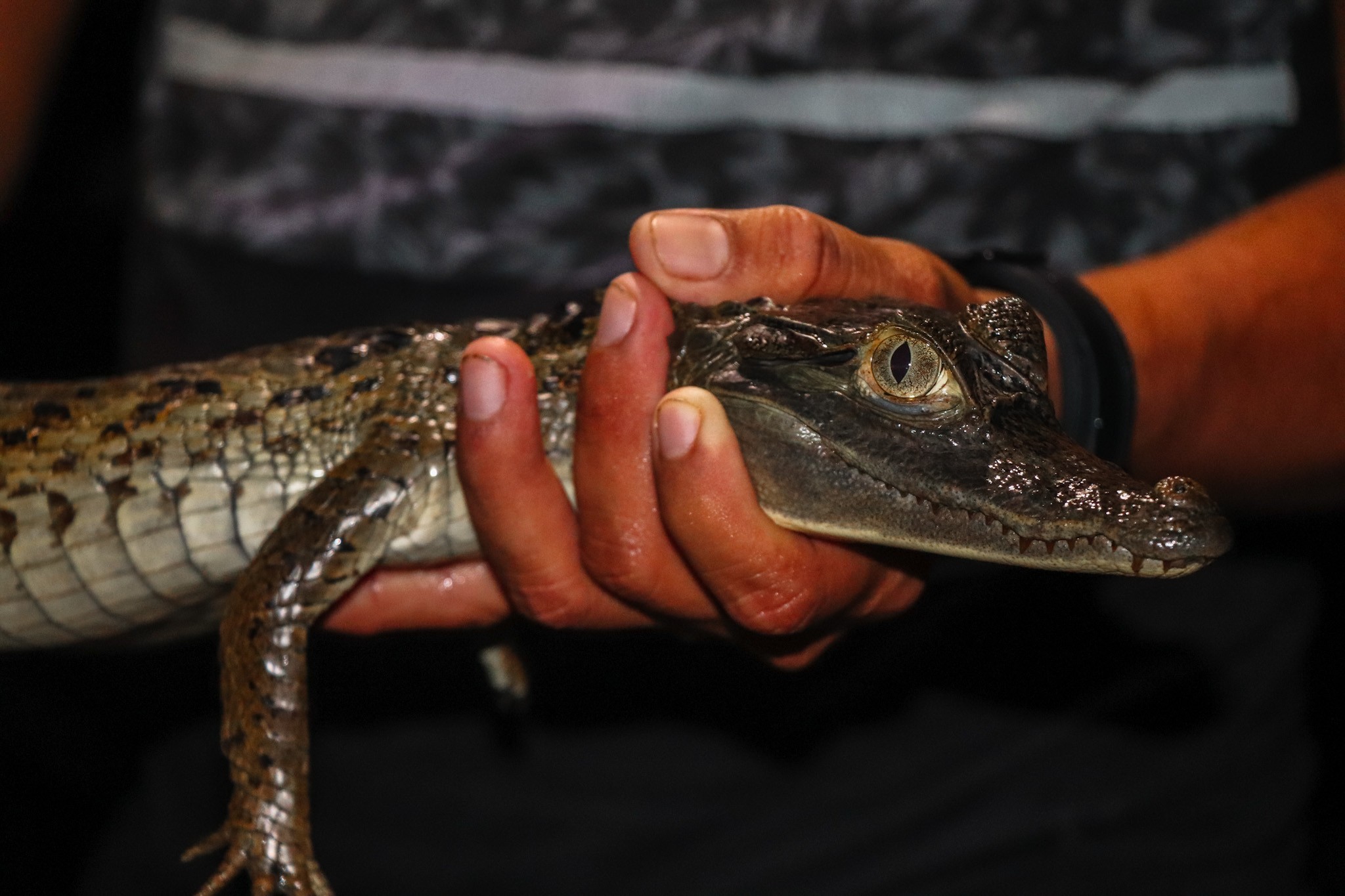
3. Monkeys
There are at least 13 different types of monkeys living in the Amazon rainforest near Iquitos. From the smallest monkey in the world, the pygmy marmoset, to the biggest one, the howler monkey. They are all incredibly adorable. Some of them are more shy and harder to spot than others.
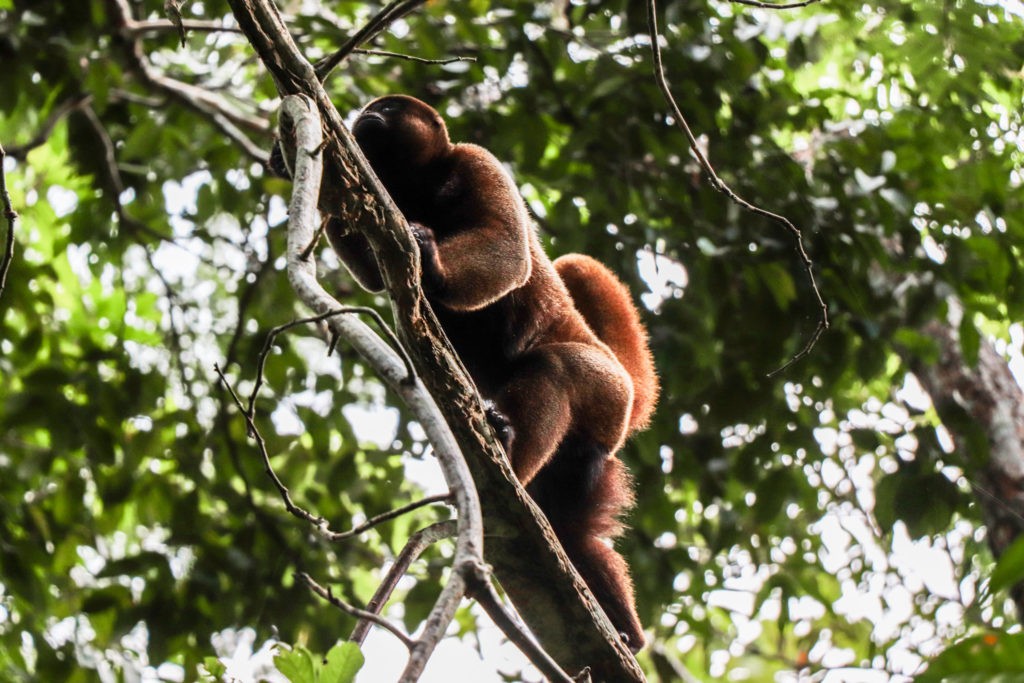
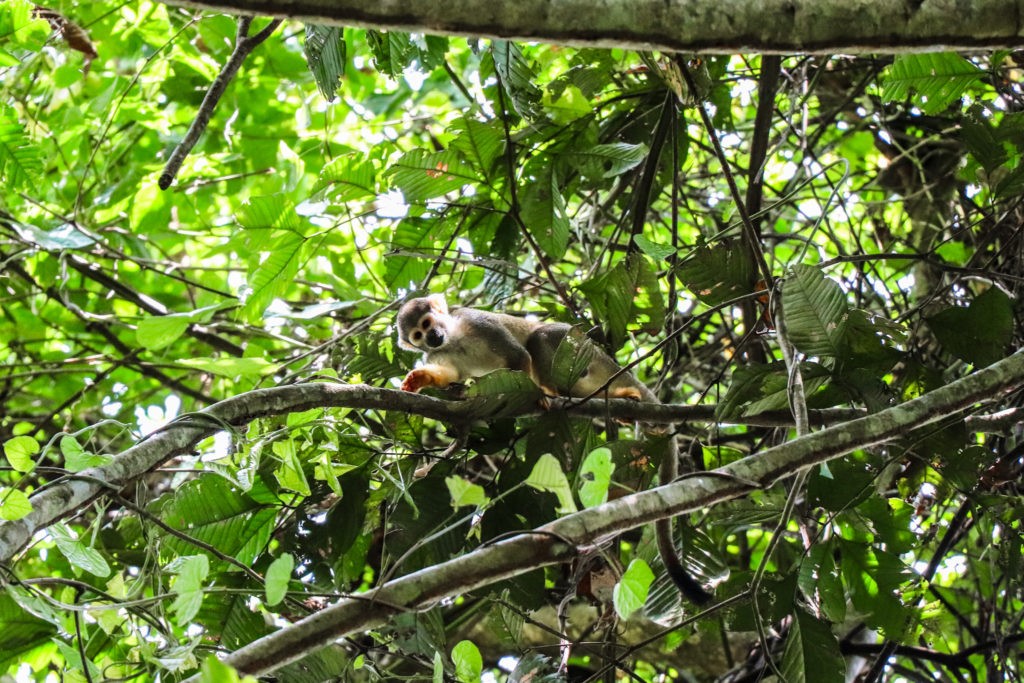
4. Jaguars
The jaguar is the largest cat species in the Americas and is found in the Amazon rainforest. Jaguars are solitary animals and are very good at camouflaging themselves in the jungle, making them difficult to spot.
They are also very shy. Therefore, the chance of seeing a jaguar in the reserve is relatively low, but it is possible, especially if you are willing to walk deeper into the jungle. Let us know if you were lucky, we would love to see some pictures!
5. Three-Toed Sloths
These slow-moving creatures are so adorable. Sloths spend most of their time hanging upside down from trees, sleeping, and eating leaves. They sleep for up to 20 hours a day! The best time to find them is in the morning and evening when they are most active.
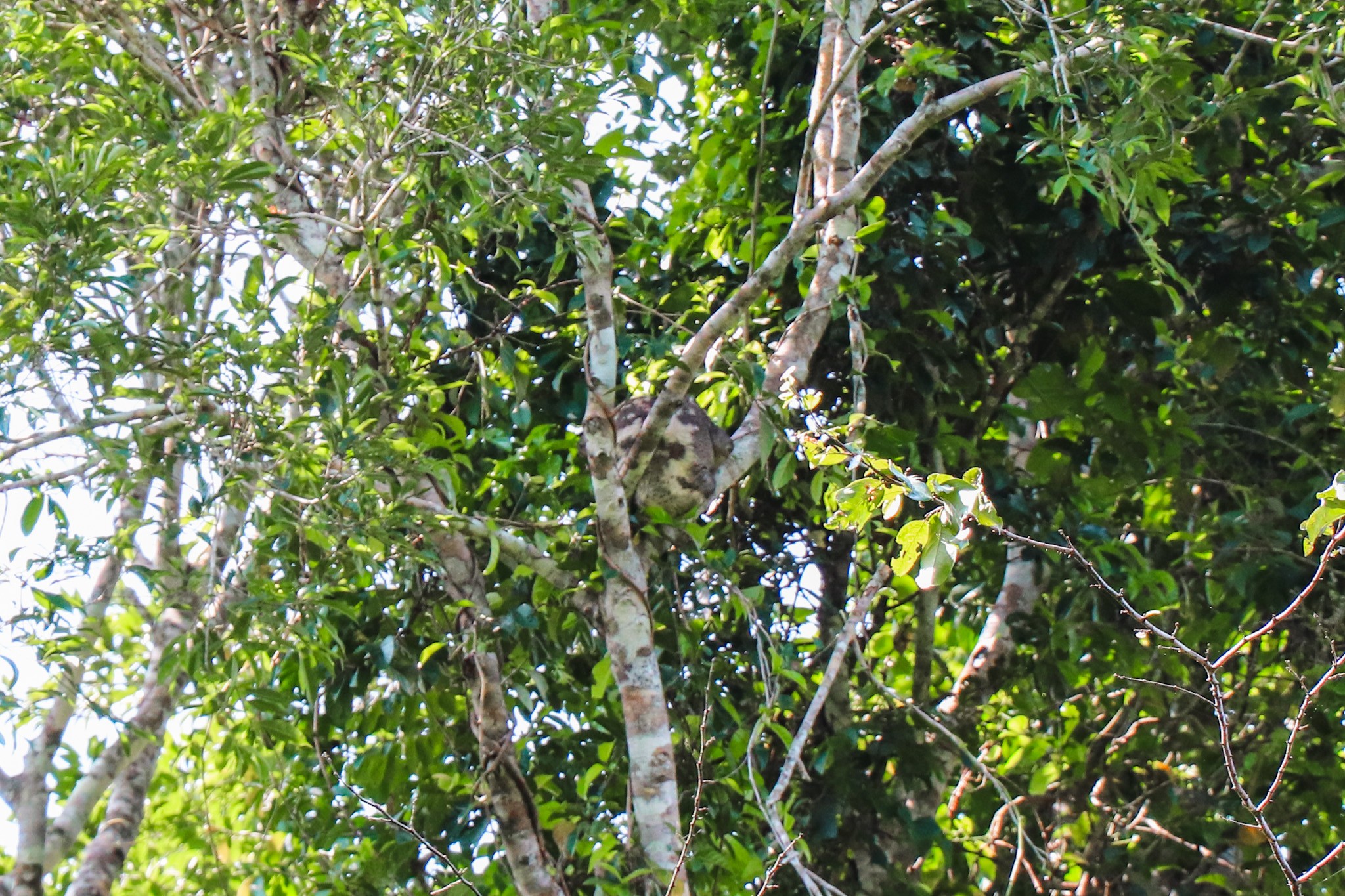
6. Macaws, Aras and Toucans
In the Amazon rainforest, you can encounter some of the most beautiful and colorful birds in the world, such as macaws, aras, and toucans. They are displaying vibrant colors that are simply stunning. As the jungle wakes up to a new day or bids farewell to the setting sun, these birds fill the air with their lively tunes.
Why is Iquitos the best place to see the Amazon in Peru?
Iquitos is located near the iconic Amazon River and is the best place to see the Amazon in Peru for its easy access to the rainforest, rich wildlife, and dense jungle. It is less crowded compared to more touristy national parks near Cusco, making your trip to the Amazon in Iquitos a more authentic experience. Plus, it is more affordable too.
When we were choosing Iquitos, we were looking for an unforgettable experience, off-the-beaten path, that will be as authentic as it gets. And for that, Iquitos didn’t disappoint. During our trip to the Amazon, we not only explored the rainforest but also had the chance to connect with local communities and witness the jungle life as it is today. This truly added to a perfect experience and made our trip feel so much more complete.
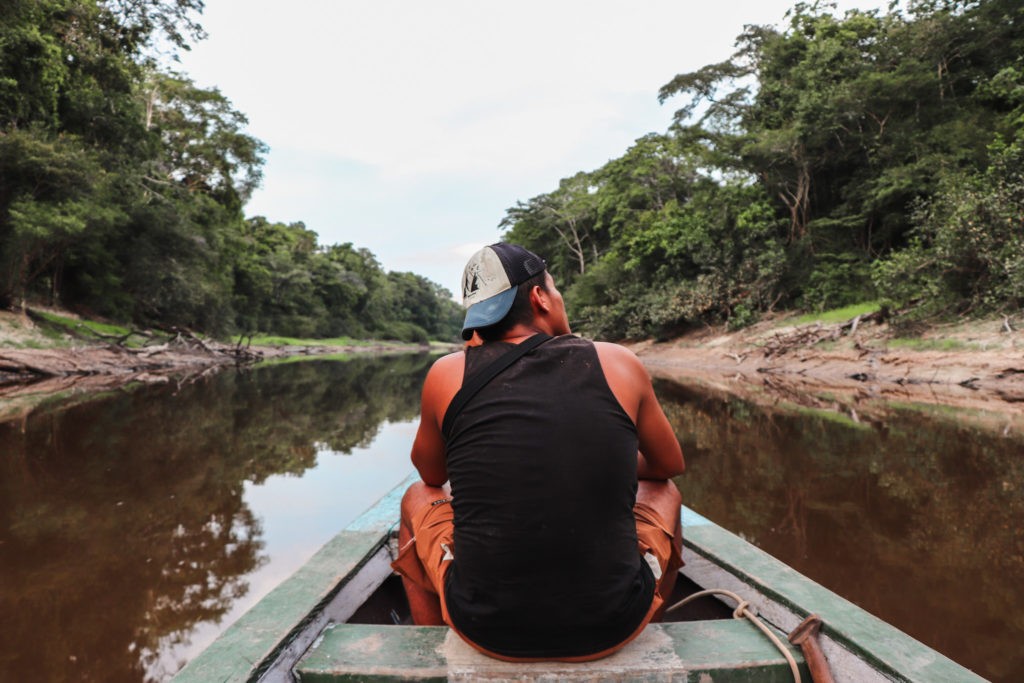
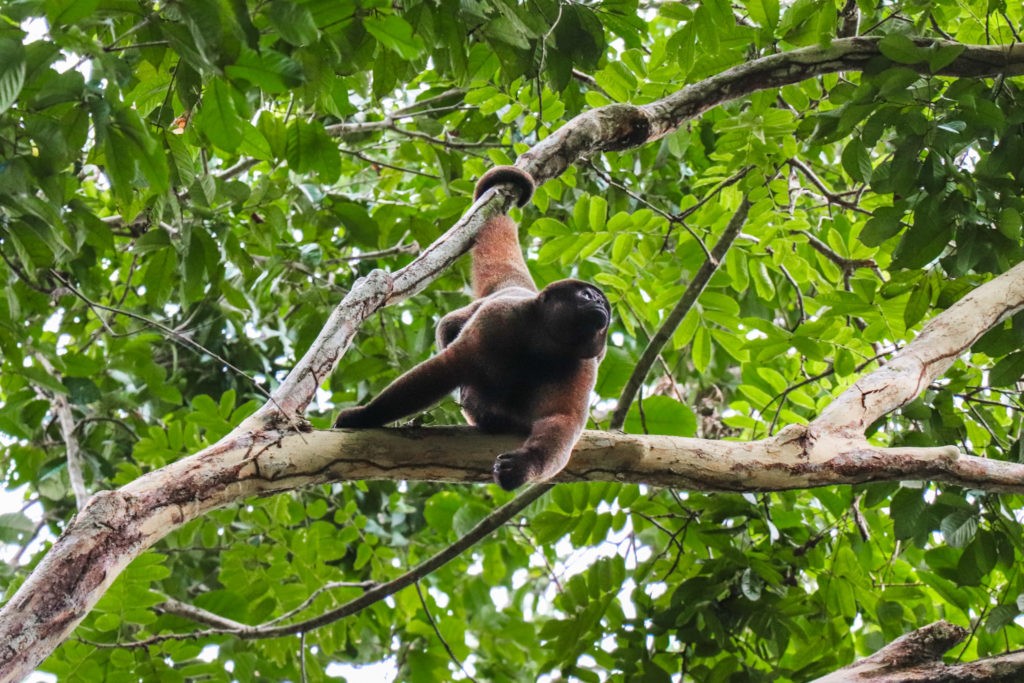
How to get to the Amazon in Iquitos?
To get to the Amazon in Peru, you first need to travel to Iquitos. Iquitos is a city midst of the rainforest, not accessible by road, and can only be reached by plane or boat. While plana e is the more convenient option, taking a boat trip will be a real adventure on its own.
For a real rainforest experience, you will have to leave Iquitos and head to the Pacaya Samaria National Reserve. Most tour operators will pick you up from your accommodation in Iquitos to first drive you to the city of Nauta. Nauta is located upstream of the Amazon River and a 2-hour drive away from Iquitos. From there you will hop on a boat that will take you further into the jungle until you reach your jungle lodge.
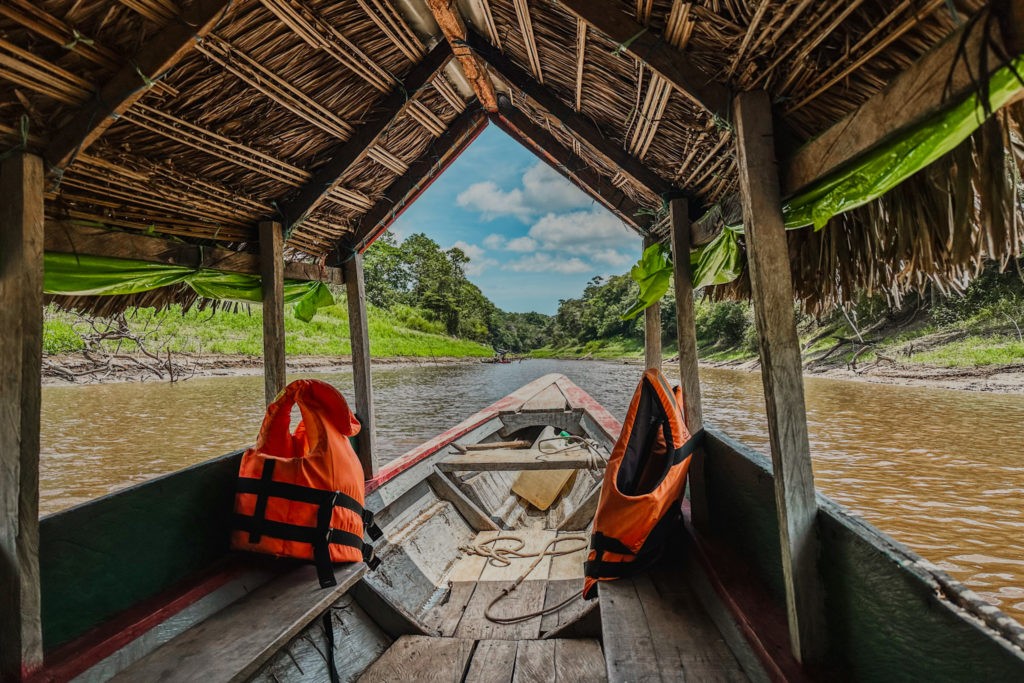
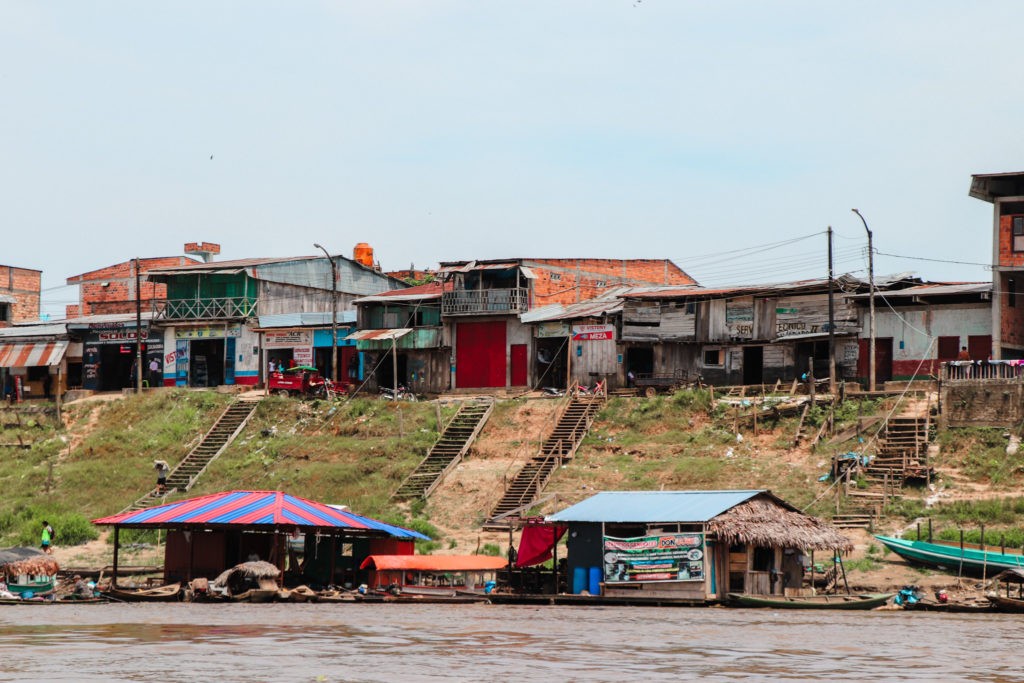
How many days to stay in the Amazon?
To make the most out of your trip to the Amazon rainforest in Iquitos, plan to spend at least 3-4 days in the jungle. This will be enough time to get deeper into the national reserve, spot a decent amount of wildlife, and take part in almost all activities.
We found booking a 4-day tour to be the sweet spot, which also our guide confirmed.
While there are also day trips available from Iquitos, we wouldn’t recommend those, as you barely scratch the surface of what awaits you in the jungle. If you are hoping to see specific animals, make sure to contact your tour operator in advance. While there is never a guarantee to find the animal you are looking for, the guides can give you a good recommendation on how long you would need to stay to have the best chances.
Relevant Reading
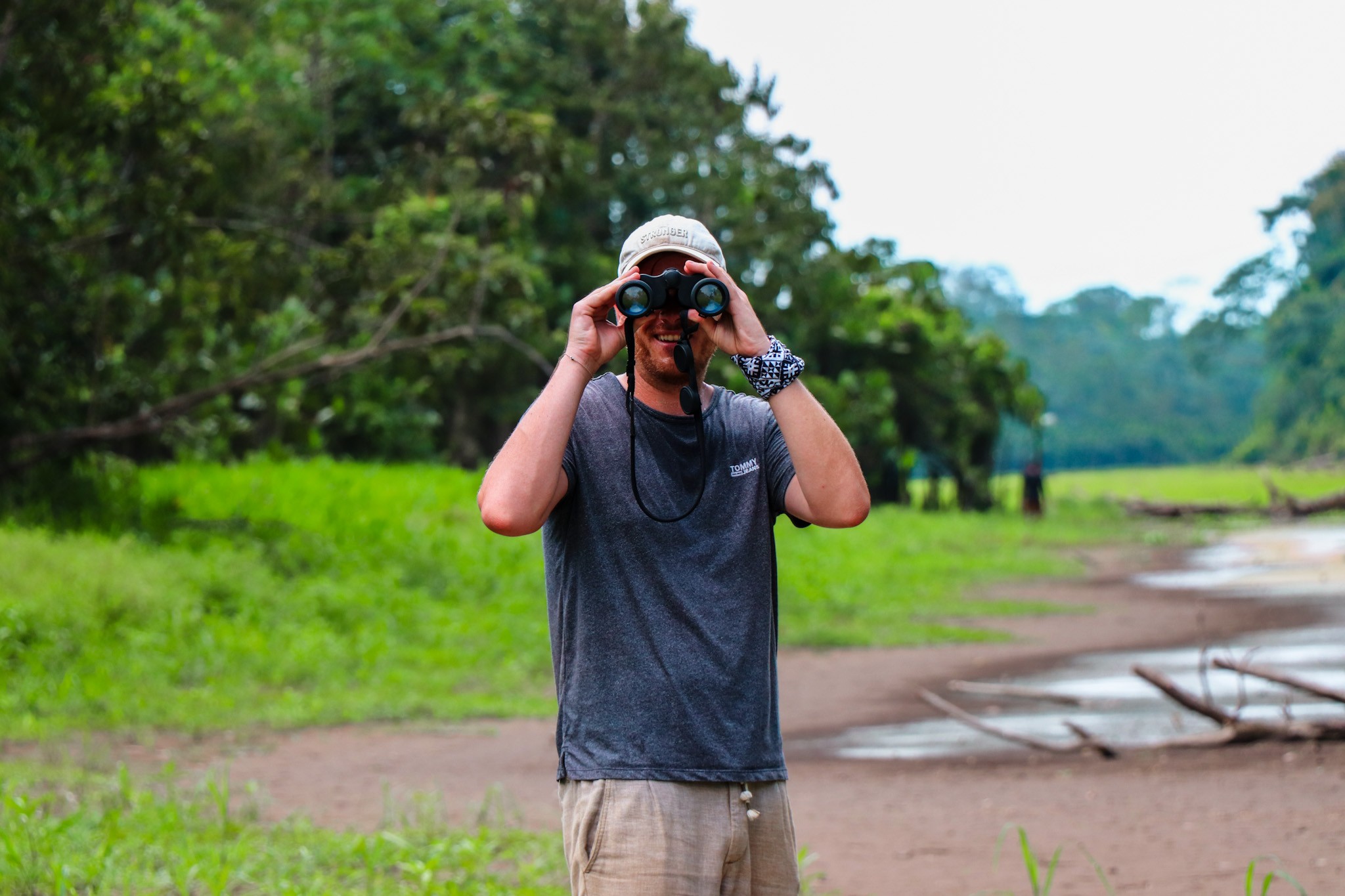
Which tour to book to see the Amazon in Peru?
Which tour to book for your Amazon experience depends on your expectations, time, and budget. In Iquitos, all kinds of tour operators offer one-day boat tours, multi-day jungle adventures, survival training, and even luxury cruises.
We would recommend booking a multi-day trip to explore the Amazon to the fullest. That way, you will have plenty of time to catch the jungle vibes, connect with locals, and take part in almost all of the activities. Most tour operators allow you to flexibly choose how many days you want to spend in the Amazon, as they do not have a fixed itinerary that must be followed.
While we wouldn’t recommend booking a single-day trip from Iquitos, as you would only scratch the surface of the Amazon, it is a viable option if you are limited in time or budget or maybe just cannot cope with the tropical climate of the rainforest.
Whichever tour operator you choose, make sure to do your research and review them properly. We are looking for tour operators who are led and operated by local communities, as it not only adds to a more authentic experience but also fosters sustainable tourism and travel.
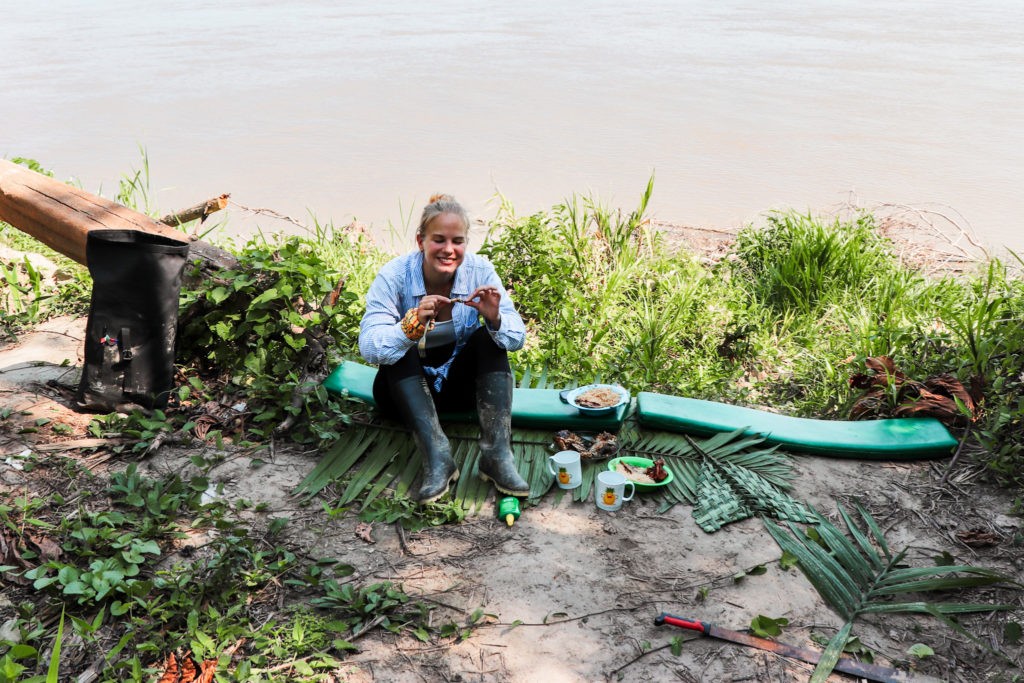
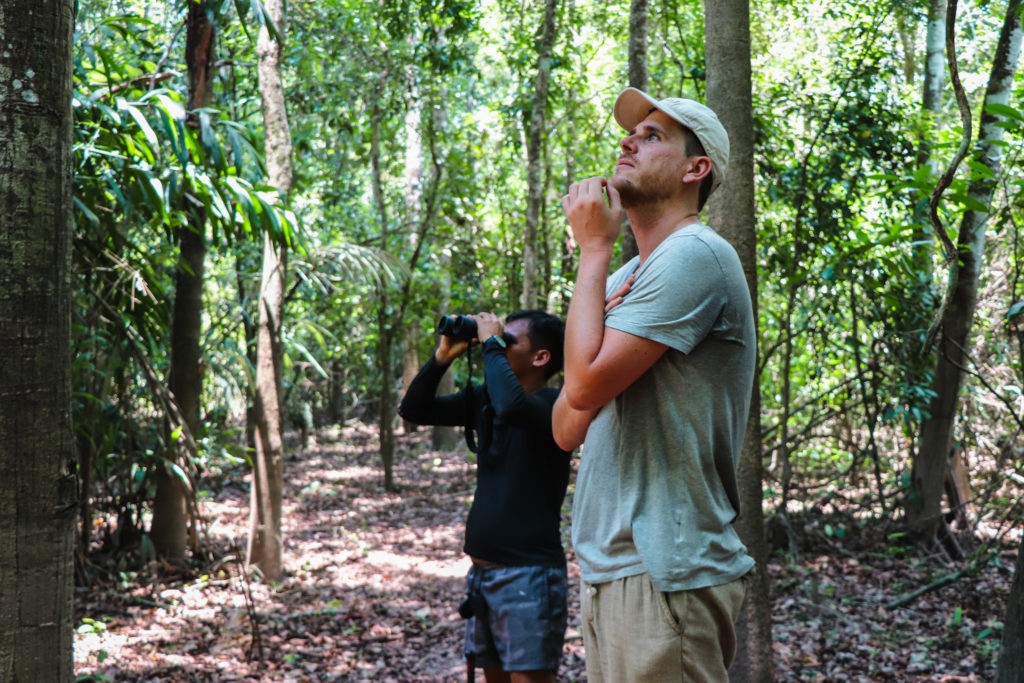
While we wouldn’t recommend booking a single-day trip from Iquitos, as you would only scratch the surface of the Amazon, it is a viable option if you are limited in time or budget or maybe just cannot cope with the tropical climate of the rainforest.
Whichever tour operator you choose, make sure to do your research and review them properly. We are looking for tour operators who are led and operated by local communities, as it not only adds to a more authentic experience but also fosters sustainable tourism and travel.
Relevant Reading
For us, choosing Allpayacu Adventures was a perfect match. Allpayacu Adventures is a local tour operator that was founded by local villagers.
Their owner May, a true jungle man, cares a lot about improving the lives of the Amazonian people and the preservation of the rainforest. Plus, Allpayacu Adventures is reinvesting most of its income to sponsor scholarships, provide medicines, and foster sustainable tourism in the area.
Without any doubt, we can wholeheartedly recommend them for your Amazon experience.
We’ve spent 4-days in the jungle with our guide Kevin from Allpayacu Adventures. He not only was a super friendly ‘jungle boy’, but very knowledgeable about everything that awaits you in the jungle. Without him, we wouldn’t have spotted anything and not even survived one day in the jungle.
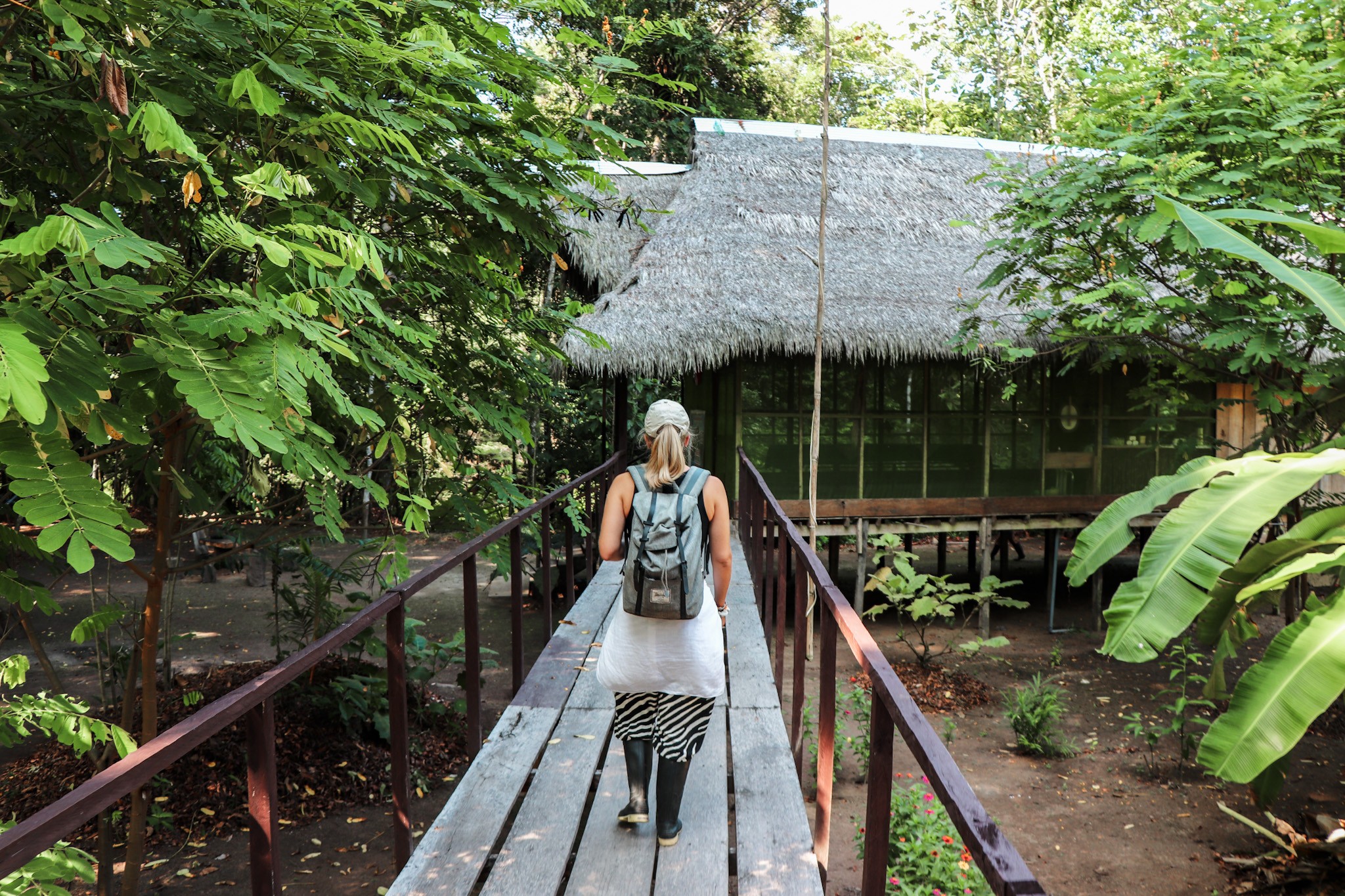
What to pack for the Amazon in Peru?
When packing for your Amazon jungle tour we recommend you be prepared for for all weathers. Pack longer clothes to protect yourself from the mosquitoes, bring some shorter clothes for midday in the lodge, and do not forget your raincoat or poncho. You would also want to bring multiple T-shirts and pants for each day, as you will be sweating a lot due to high temperatures and humidity. This way you can change into dry clothes after your well-deserved refreshing shower.
Must Haves
- Passports
- Travel Insurance
- First Aid Kit
- Daypack
- Sunscreen
- Insect Repellent
Essentials
- Hat and Sunglasses
- Long Pants and Sleeves
- Jacket (Waterproof)
- T-Shirts and Shorts
- Reusable Water Bottle
- Headlamp
- Powerbank
Nice to Haves
- Camera, Zoom Lens
- Swimwear, Towel
- Sweatband or -rag
- Dry Shampoo
- Energy Bars, Nuts
- Cash (Tips, Drinks)
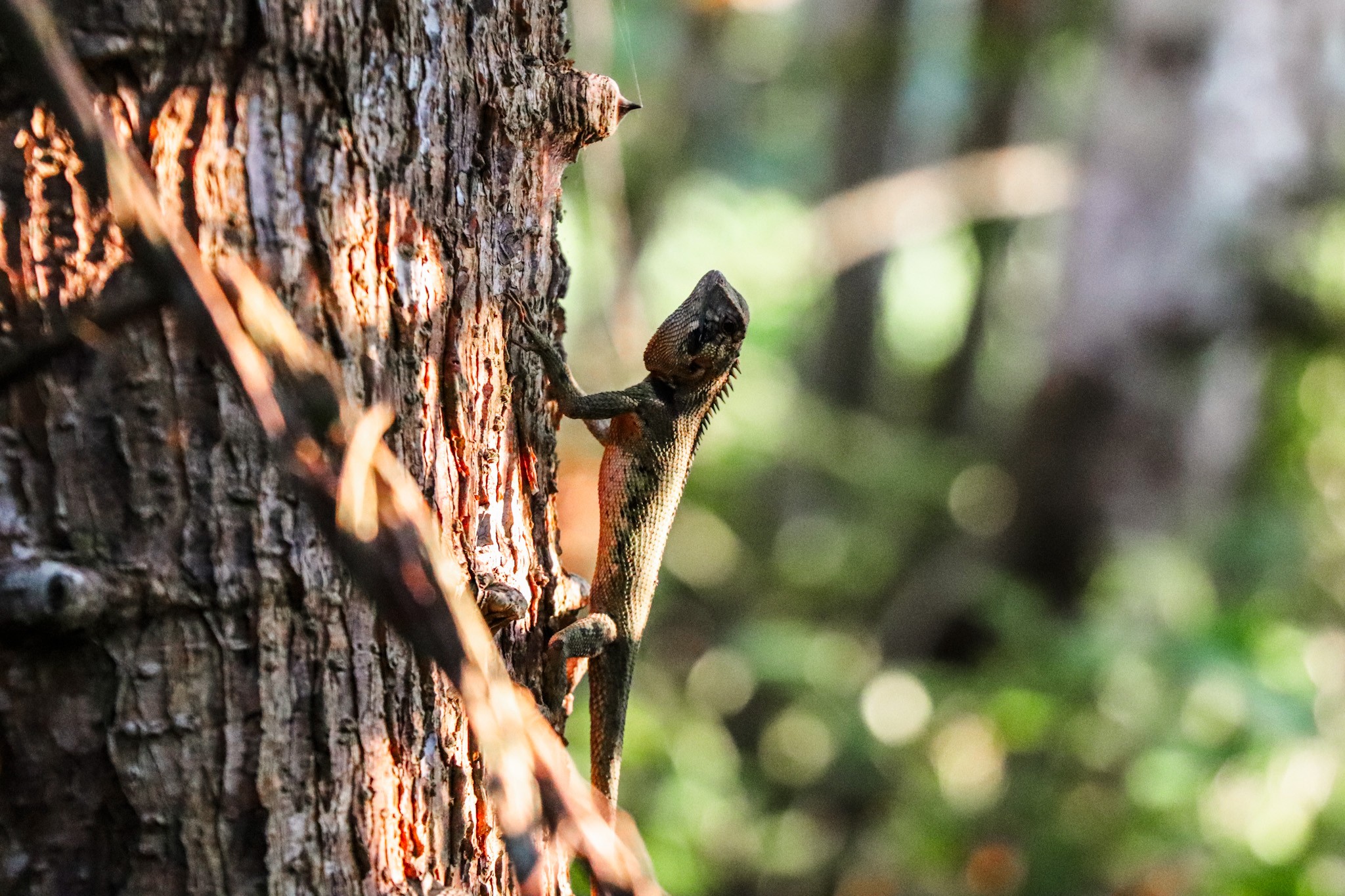
Long Pants and Sleeves | Wearing long sleeves and trousers is a good idea to shield yourself from those annoying jungle mosquitoes and biting flies. Also, mosquitoes tend to favor darker colors over lighter ones. Moreover, lighter-colored clothing makes it easier to spot other insects crawling on you and keeps you cool.
T-Shits and Shorts | We recommend also packing shorter clothes for your stay in the lodge as the Amazon can get pretty hot during the day. Do not forget to apply mosquito repellent though to keep the mosquitoes away.
Reusable Water Bottle | Lodges typically offer filtered water, so remember to bring your reusable bottle for refills. It’s a good idea to have a 1 to 1.5-liter bottle to make sure you stay well-hydrated, especially on longer hikes.
Insect Repellent | The most effective mosquito repellents tend to be the strong DEET or picaridin sprays. Our trusty Autan Multi Insect spray was incredibly good in keeping the insects away. We had the feeling that the new repellent we bought in Lima with 15% DEET didn’t work as well. So, our advice is to bring reliable stuff from home to ensure a mosquito-free experience.
Sunscreen | While the trees provide shade during jungle walks, during the boat rides the sun will be shining directly onto you. Therefore, don’t forget to pack lots of sunscreen, and lots of it, considering that you’ll need to reapply it frequently as it washes off with sweat.
Daypack | Also bring a smaller backpack, ideally between 10 to 20 liters, for your jungle walks. With unpredictable rain showers, having a waterproof daypack can be a real lifesaver to protect your valuables.
Flip Flops | After hiking in rubber boots for hours, you will want your feet to breathe during the breaks and in the evenings.
Sweatband or Sweatrag | Expect to sweat a lot during your hike. It’s better to wipe your face with a sweat rag than your mosquito-repellent sleeves or dirty hands.
Powerbank | It may differ from lodge to lodge but ours had electricity only from 6-9 p.m. To ensure that your camera and phone will have enough battery to capture those special moments, make sure to bring a power bank with you.
Swimwear and Towel | Some tours offer you the opportunity to have a quick swim in the river and in case you don’t want to miss it, pack your swimsuit.
Flashlight or Headlight | If your tour includes night walks, it’s important to bring a flashlight or, even better, a headlamp with you. The jungle is very dark at night and you don’t want to accidentally step on anything that could attack you.
Dry Shampoo | Dry shampoo will be your hero if you don’t want to wash your hair every day. Just a few sprays and your hair will look fresh again.
When is the best time to visit the Amazon in Peru?
The Amazon is a travel destination that can be visited all year round. While the experience in the dry and rainy season is different, there is no single best time to visit the Amazon rainforest in Peru, as both seasons offer equally worthwhile adventures. Most people, however, prefer traveling to the Amazon rainforest during the dry season.
The dry season, also referred as the low-water season, lasts from June to October. During this time, rivers have less water and jungles are drier, allowing for more on-foot exploration. Since it is the sunnier season, humidity and temperatures are the highest peaking between 31°C-37°C (88°F-98°F). Rainfalls during the dry season are not uncommon, but less often and shorter compared to the rainy season.
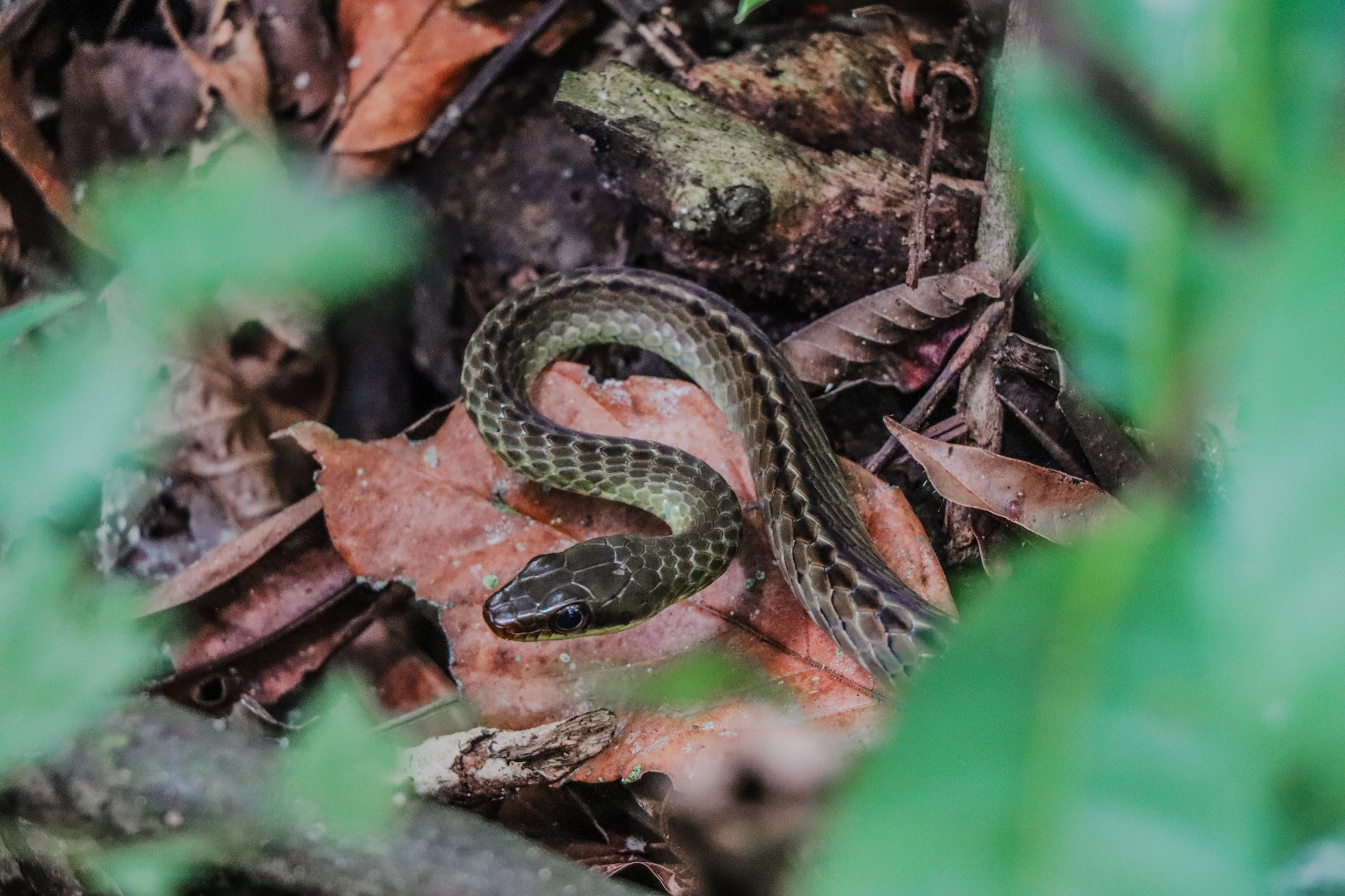
The rainy season, consequently referred as the high-water season, lasts from November to May. During this time, the already wide rivers span across the dense jungle. Explorations are mainly by boat and, therefore, less walking is required. Humidity and temperatures are slightly lower, peaking between 30°C-33°C (86°F-91°F). Because it is the rainy season, precipitation is more common. Still, showers are rather short but intense. In turn, more flowers and fruits grow attracting animals, making it easier to spot wildlife from the boat.
While the dry season is an ideal season to explore the rainforest with the least rain by foot, the rainy season benefits from the possibility of exploring a wider area by boat. In both seasons Iquitos and the Amazon are not too heavily crowded, with less tourists traveling to Iquitos during the rainy season.
What does it cost to visit the Amazon in Peru?
The cost of visiting the Amazon rainforest in Iquitos depends on the tour you book. Most packages already cover the majority of your daily costs, such as the guide, transportation, accommodation, food, and drinks.
While prices for a single-day trip can be higher, expect to pay around 80 – 120 USD per day to visit the Amazon in Peru. Most tour operators accept payments by card but keep in mind that they may charge an additional fee of 5% to the tour price. So in case you have the opportunity to bring some cash, you can save a little money.
In Iquitos, you can find ATMs from most Peruvian banks. If you want to save some money on ATM fees look for ATMs from the Banco de la Nacion. We found this to be the only bank that currently does not charge any additional fees, but withdrawals are limited to a maximum of 800 PEN (≈ 213 USD) per day.
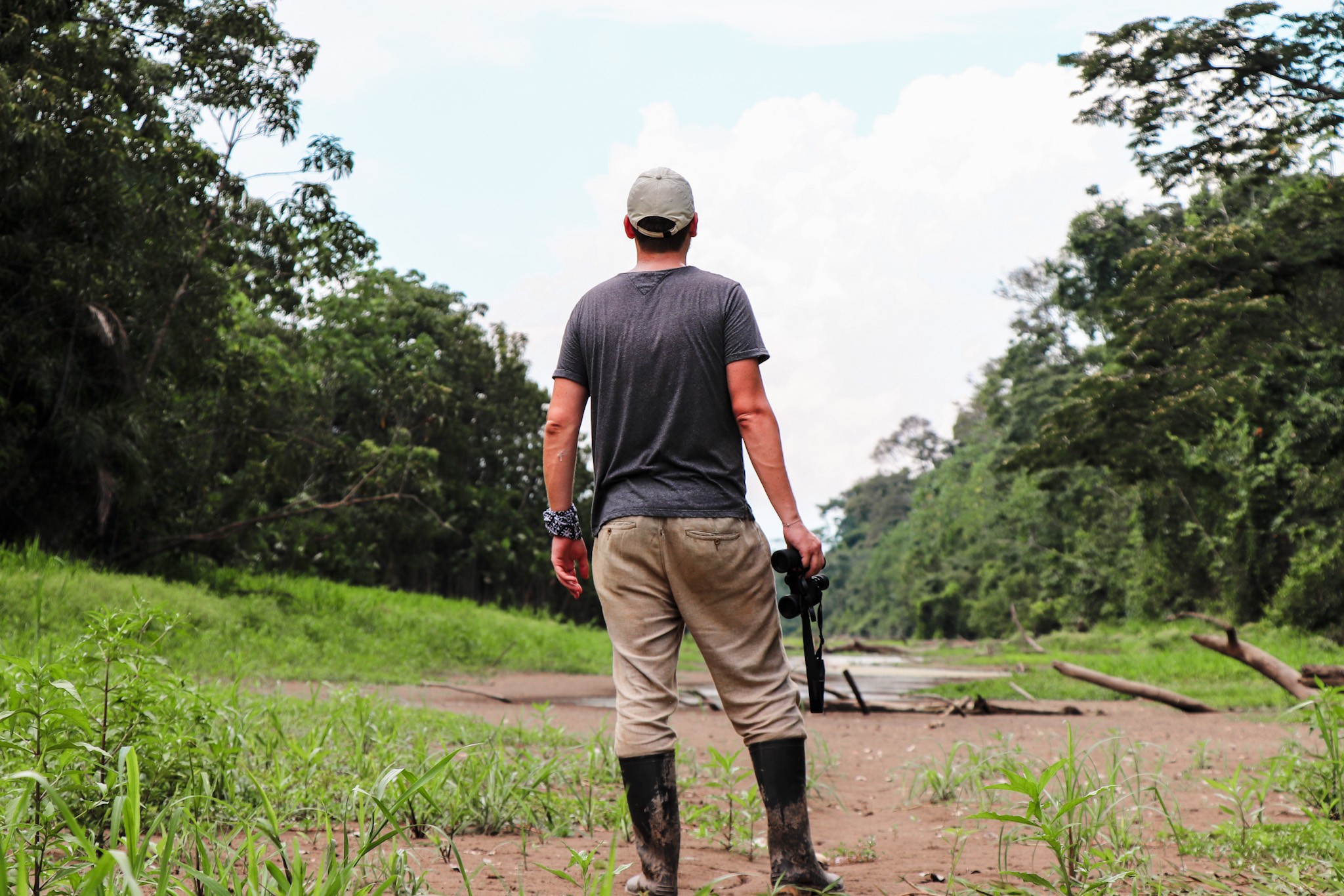
Is the Amazon in Peru worth it?
Visiting the Amazon in Peru is an unforgettable experience and worth for its unmatched biodiversity and untouched nature. It is a perfect place to connect with nature and get to know the rich wildlife of the jungle.
Our time in the Amazon rainforest was a blast. From the very second we entered the jungle, we were stunned by the beauty of this place. Listening to the sounds of nature, seeing and experiencing the undisturbed flora and fauna, and learning about the locals’ life was just unforgettable.
Never have we thought that such remote and almost untouched places still exist in our ever-developing world. And while we soaked in those jungle vibes, it reminded us how important it is to protect and preserve these incredible ecosystems.
Relevant Reading
